Highlights and access methods of Toba Aquarium (Mie Prefecture)
English | Japanese
The Toba Aquarium in Mie Prefecture is one of the largest aquariums in Japan, housing about 1,200 species of marine life. It is uniquely divided into 12 areas with no set route, allowing visitors to explore at their leisure. Notably, it is the only aquarium in Japan that keeps dugongs. Popular events include otter and walrus feedings, and sea lion shows, providing a full day of entertainment for visitors.
This article introduces the highlights and access methods of Toba Aquarium for travelers from both overseas and within Japan.
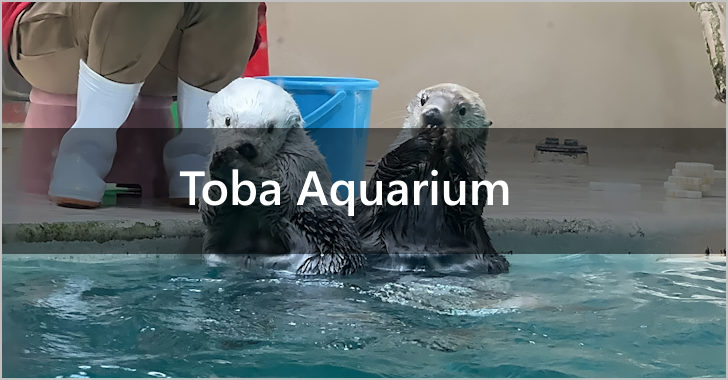
(Prefecture : Mie , Category : Aquariums)
(Last modified: )
Table of contents
- Highlights of Toba Aquarium
- Toba Aquarium operating hours, closing days, ticket prices
- Admission and Touring Methods for Toba Aquarium
- A:Performance Stadium
- B:Kingdom of Marine Mammals
- C:Ancient Seas
- D:Coral Reef Diving
- E:Ise-Shima and Seas of Japan
- F:Jungle World
- G:Miracle Forest
- H:Mermaid's Sea
- List of photos related to Toba Aquarium
- Address and access method of Toba Aquarium
- Attractions near Toba Aquarium
- Other information about Toba Aquarium
Highlights of Toba Aquarium
We will introduce the highlights of Toba Aquarium.
Toba Aquarium operating hours, closing days, ticket prices
I'll explain the operating hours, closing days, and ticket prices for Toba Aquarium.
Operating Hours
Toba Aquarium's opening hours are from 09:30 to 17:00, with the last admission at 16:00. During the Golden Week (May 1 to May 7), summer period (August 1 to August 31), and specific long weekends (July 13 to July 15, September 14 to September 16, September 21 to September 23), the hours are extended from 09:00 to 17:30.
Please check the official website's 「Operating Information & Access」 section for the hours on the day of your visit.
Closing Days
Toba Aquarium is open all year round.
Ticket Prices
Here are the ticket prices for Toba Aquarium:
・Adults: 2,800 yen
・Elementary and junior high school students: 1,600 yen
・Preschoolers (3 years and older): 800 yen
In addition to purchasing tickets at the local ticket office, you can also buy them online. There are also options available for combined tickets with other facilities.
It's important to note that if you're buying tickets at the local ticket office, the ticket office opens at the same time as the aquarium. Those without tickets must first queue at the ticket office, purchase their tickets at the opening time, and then line up at the entrance to the aquarium. However, if you have an annual pass or an online ticket, you can queue directly at the entrance and enter the aquarium right away.
If you wish to participate in an event right after opening, buying tickets at the location may delay your entry. Therefore, it is recommended to purchase your tickets online in advance if you want to enter the aquarium as early as possible.
Admission and Touring Methods for Toba Aquarium
This is the admission method for Toba Aquarium. As you walk from the parking lot towards Toba Aquarium, you will find lines for the entrance gate and for buying tickets.
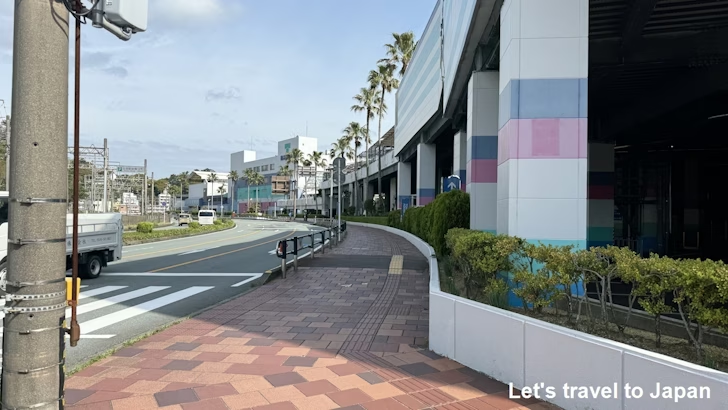


If you have a ticket, please line up in the left line for the entrance gate. If you do not have a ticket, please line up in the right line to purchase a ticket.
When the opening time comes, the entrance gate will open, so if you have a ticket, please show it to the staff. They will scan the barcode, so please have your online ticket ready in advance. Then proceed inside.
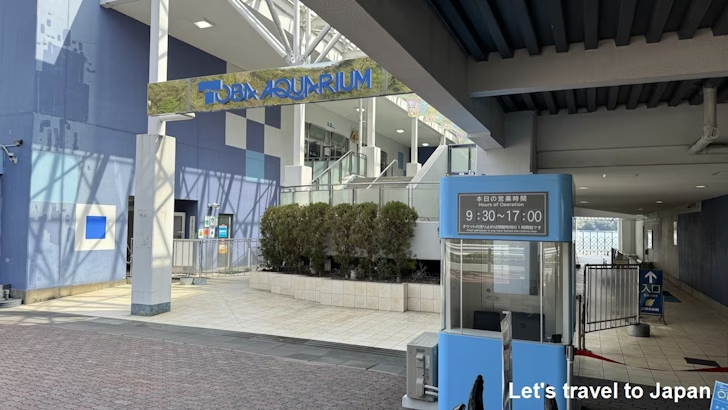
If you do not have a ticket, the ticket window will open at opening time, so please purchase your ticket then. Afterwards, join the line at the entrance gate to enter.
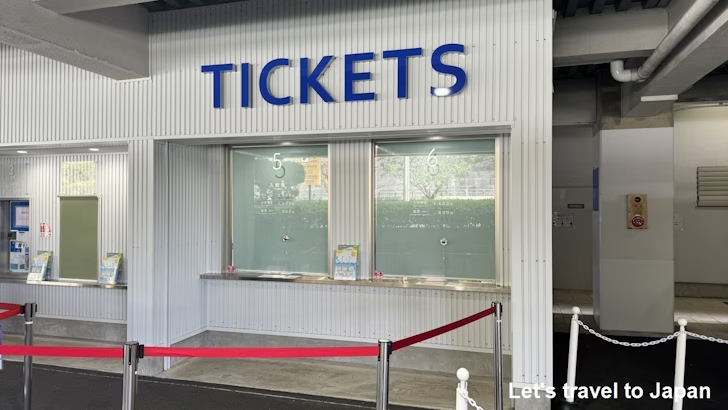
After passing through the entrance gate, first go up the stairs to the second floor. There is an entrance on the left side after ascending the stairs.
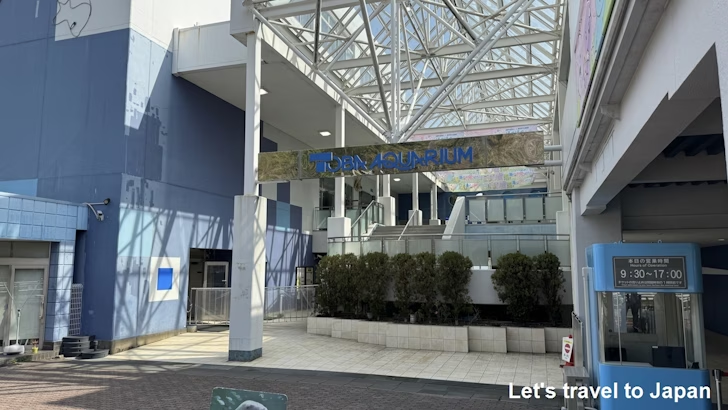
Entering through this entrance and going up a short staircase leads you to the entrance hall, where there is a large aquarium. To the right, there is Main Street which connects various areas of Toba Aquarium.
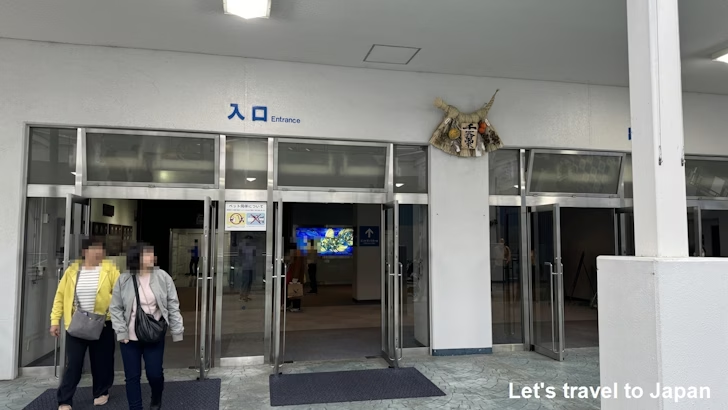
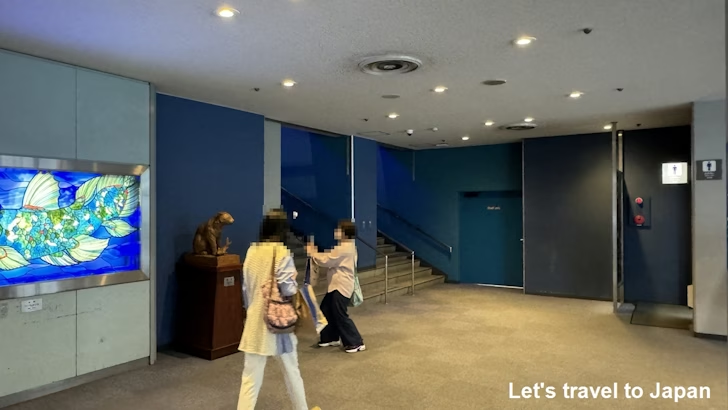
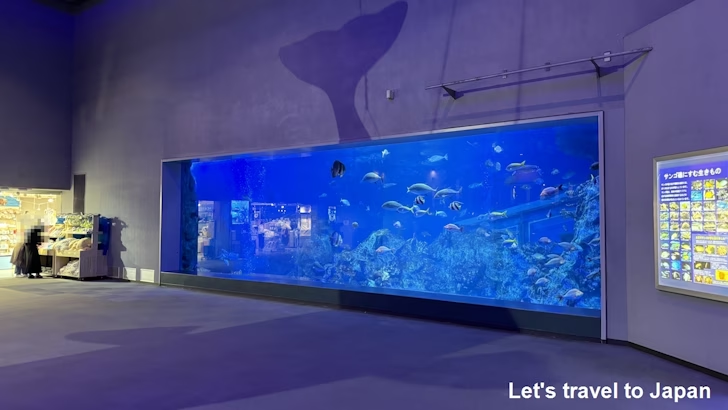
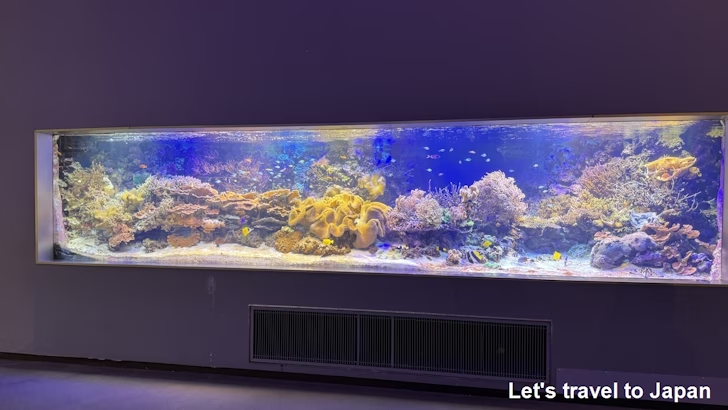
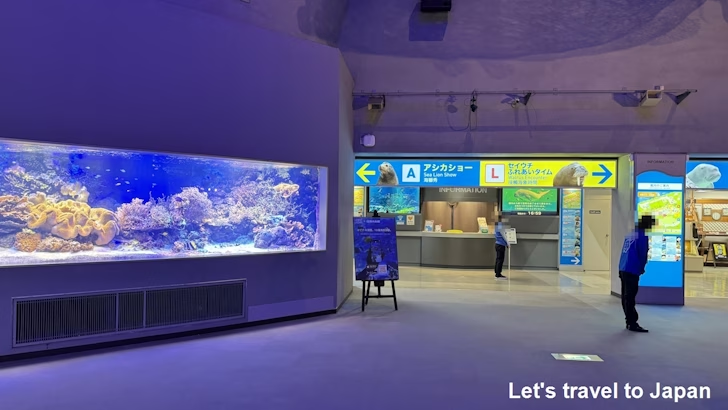
Toba Aquarium has three floors. The first floor has the entrance and gallery, while the third floor houses areas like "G: Forest of Miracles" and "J: Rivers of Japan." Most other areas are located on the second floor, where the entrance hall is located.
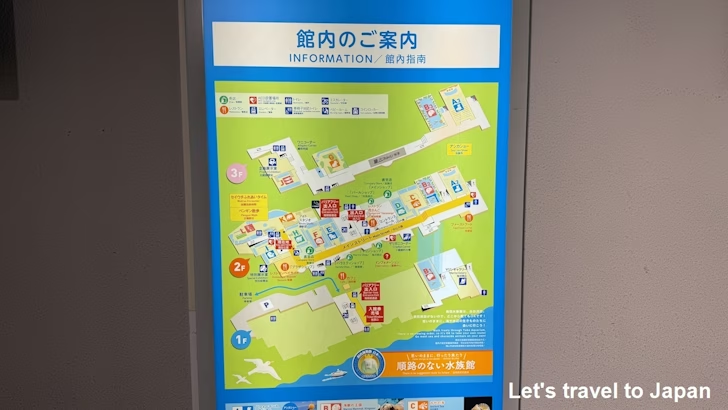
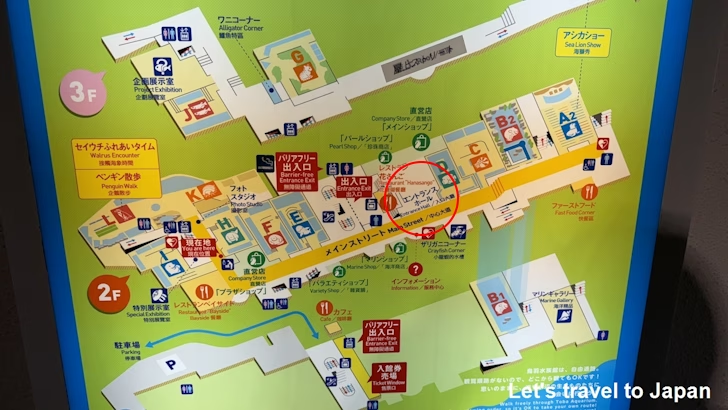
There is no designated route in Toba Aquarium. Each area can be freely accessed from Main Street, so please visit the areas you are interested in. I will introduce each area subsequently.
The otter exhibit is in the "I: Polar Seas" area. If you want to head there immediately after entering, please proceed by turning right on Main Street and go straight to the end. Turn right at the restaurant at the end, and the "I: Polar Seas" area will be on your left. Enter there, and the otter tank is on the right.
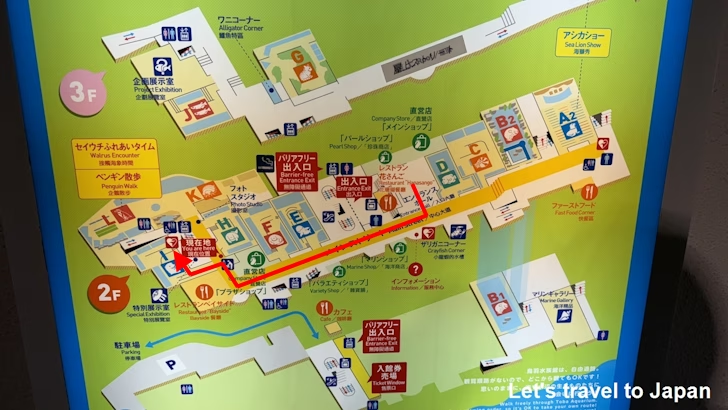
A:Performance Stadium
"A: Performance Stadium" is the venue where the sea lion shows are held.
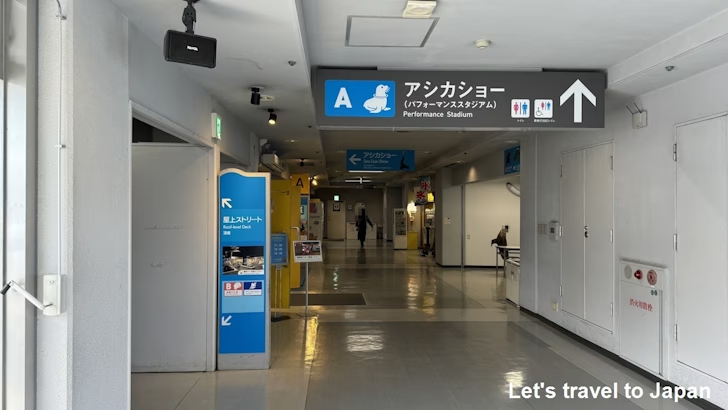
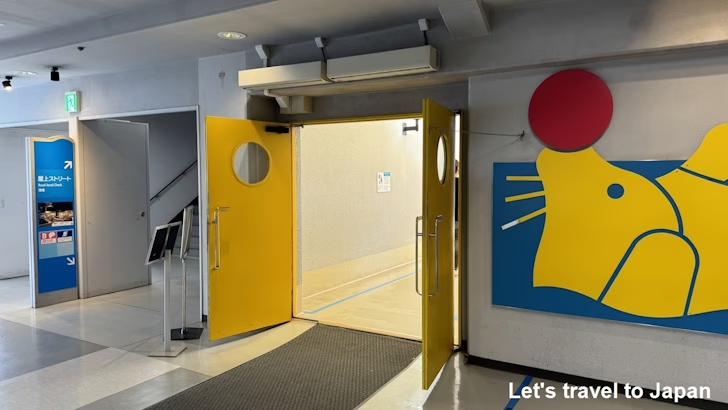
The sea lion show is conducted three times a day (four times during peak season) and each show lasts about 15 minutes. Seating is on a first-come, first-served basis, so please be seated before the show starts.
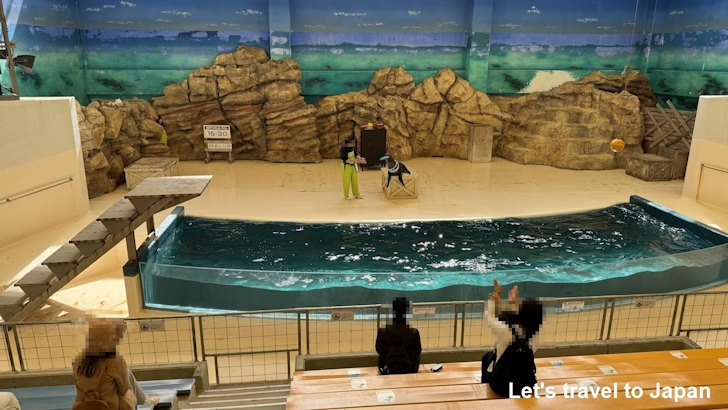
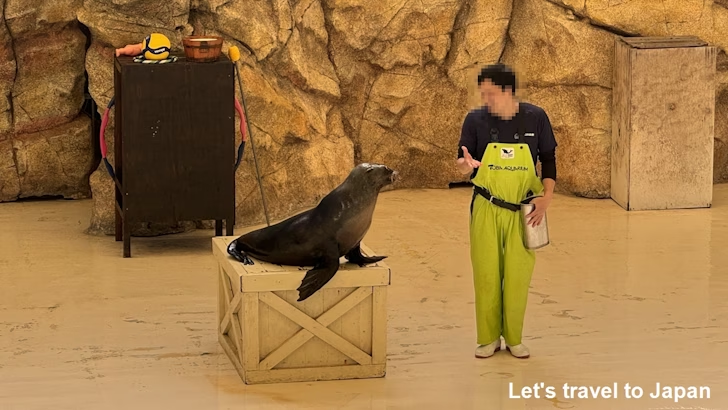
B:Kingdom of Marine Mammals
"B: Kingdom of Marine Mammals" features an area with a clear tube walkway above the tanks, allowing visitors to view marine mammals such as Steller sea lions, California sea lions, grey seals, and South African fur seals from within the tube as it passes through the water.
The Kingdom of Marine Mammals area is accessible from the first, second, and third floors. We'll start by viewing from the second floor.
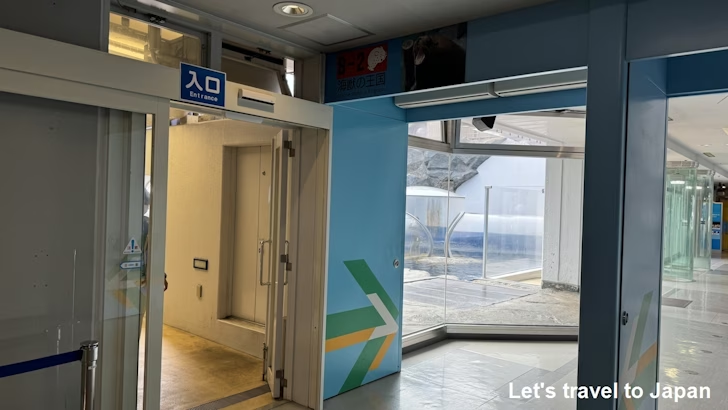
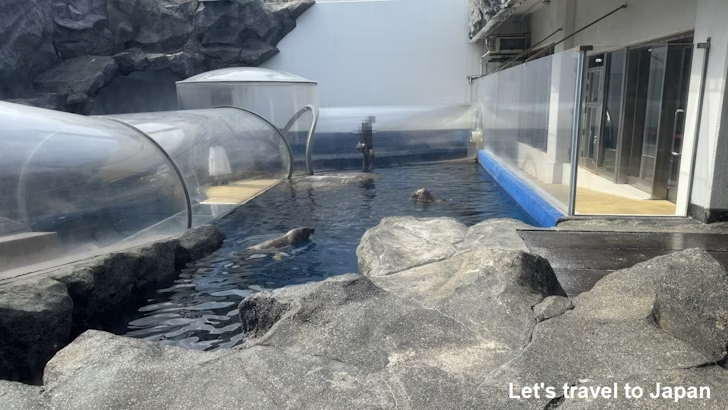
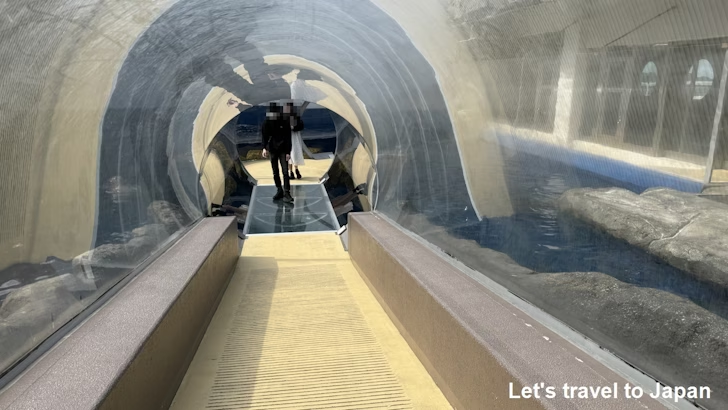
The tube is immersed in water, allowing visitors to watch seals and other creatures swim past or below them.
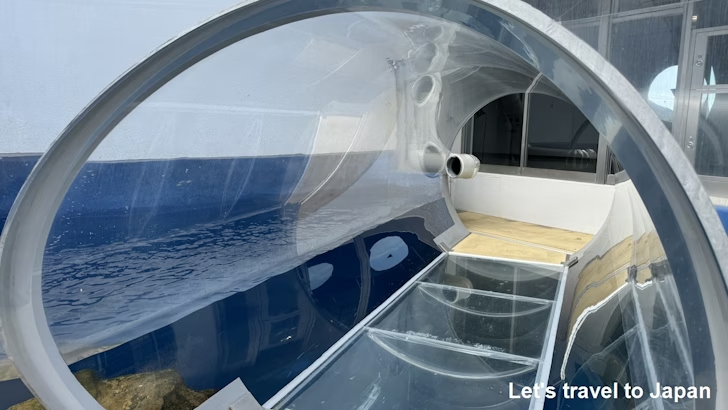
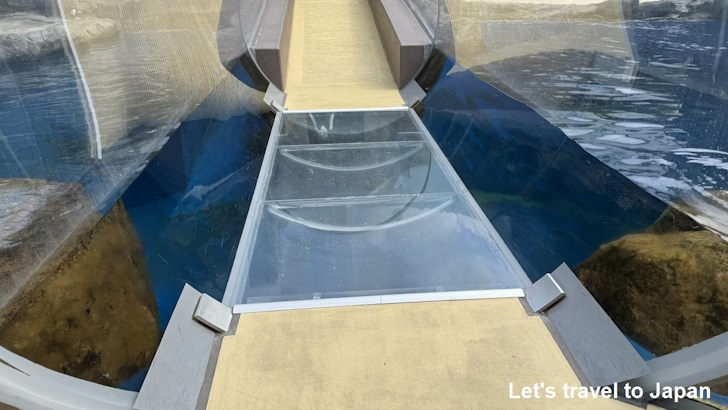
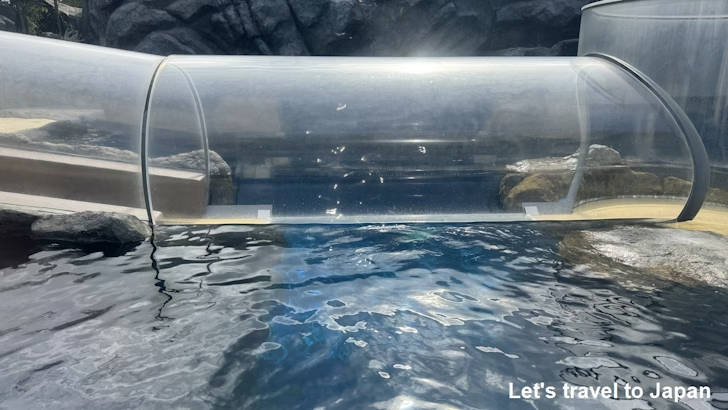
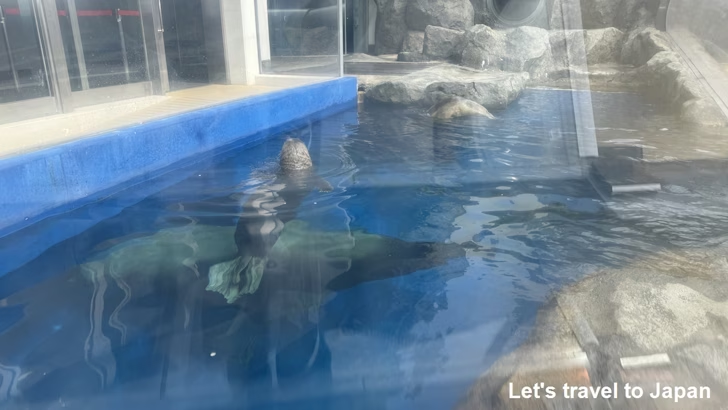
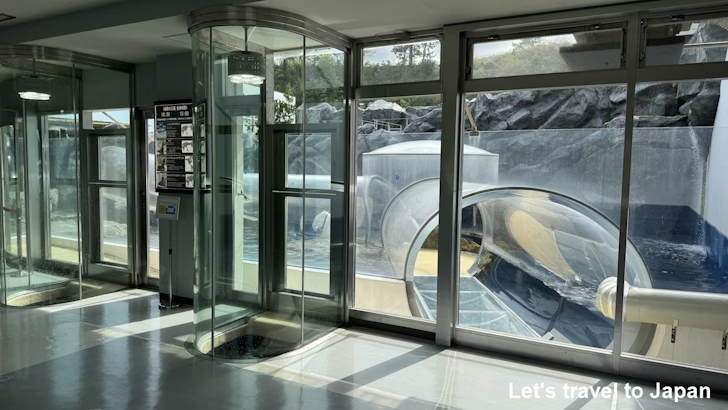
Additionally, you can watch them being fed twice a day.

Next, let's view from the first floor. Please descend to the first floor using the staircase near the second floor.
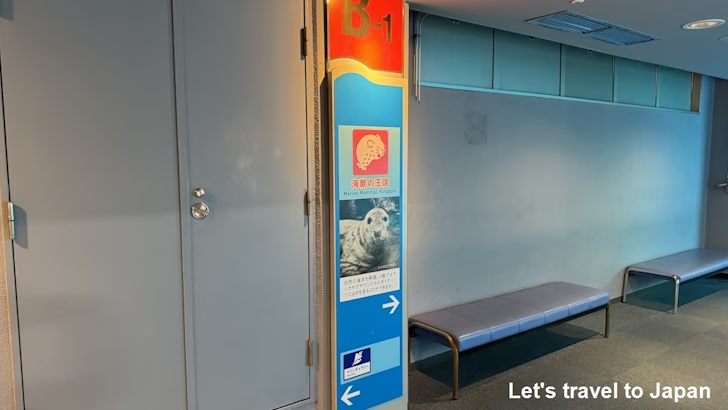
From here, you can view the same tank from the side, offering a perspective from below the tube you previously walked through.
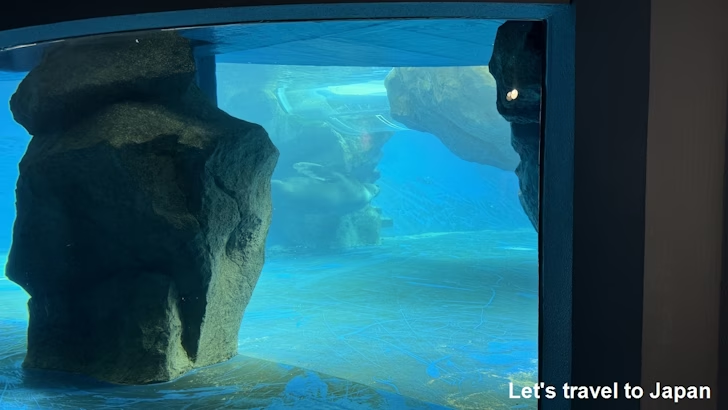
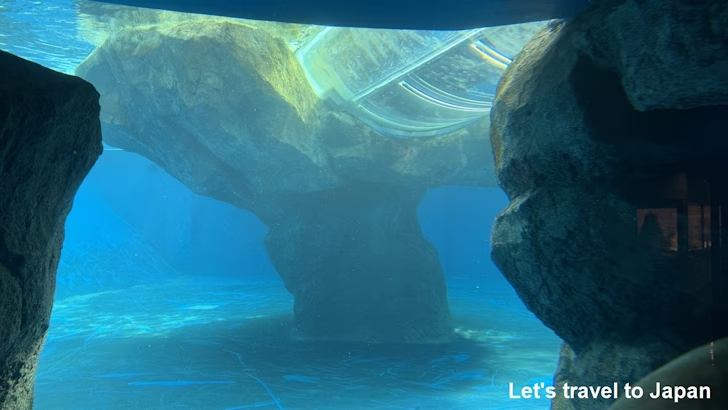
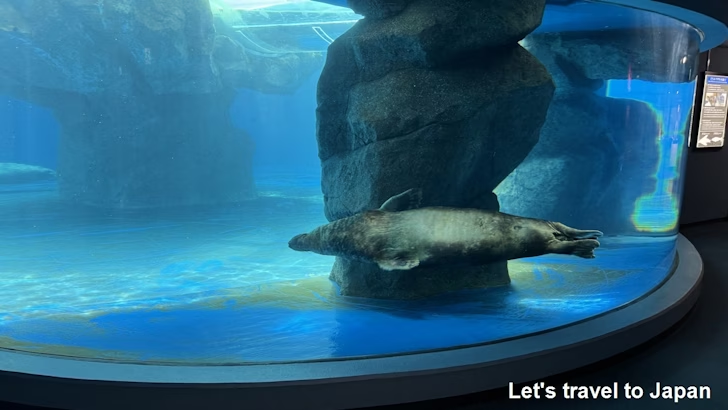
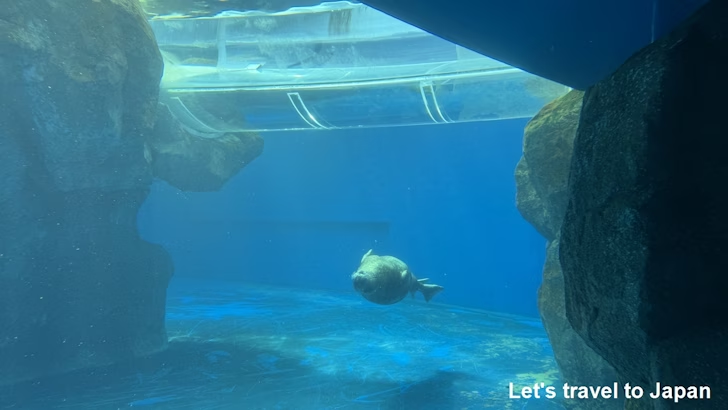
Continuing, let's view from the third floor. Ascend to the third floor using the staircase near the second floor. From this vantage point, you can look down upon the tank and tube, observing the marine animals from above.
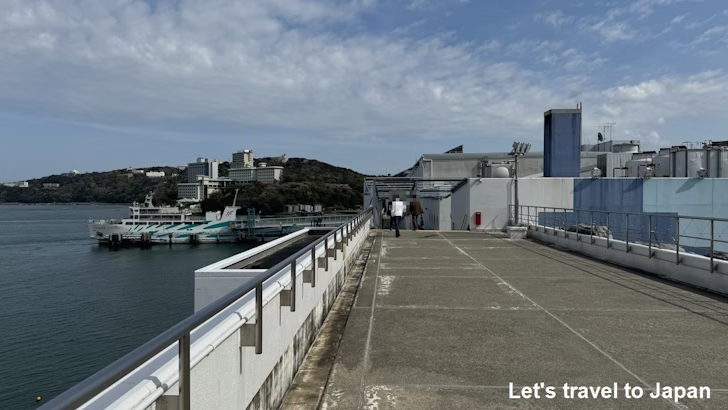
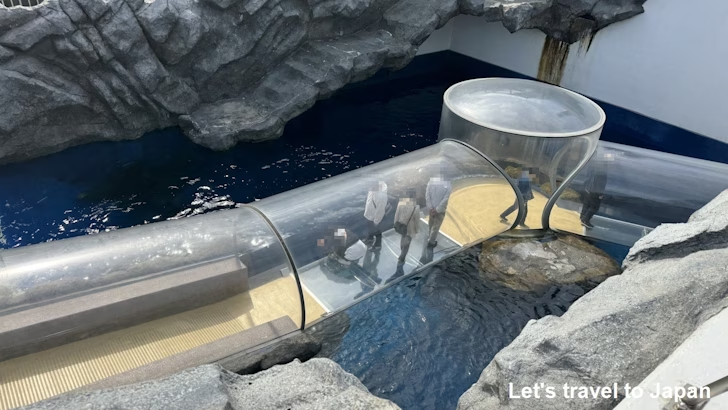
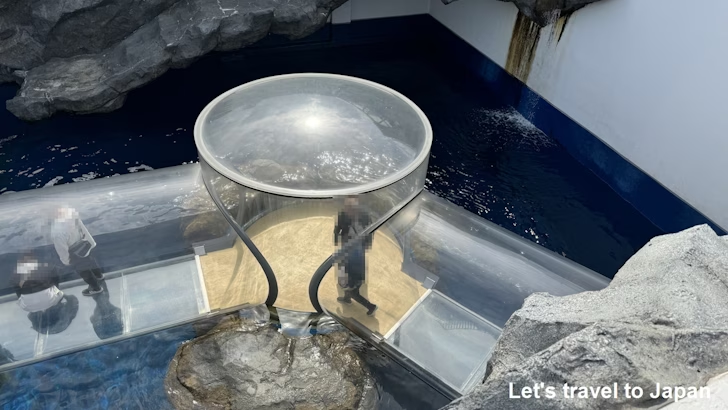
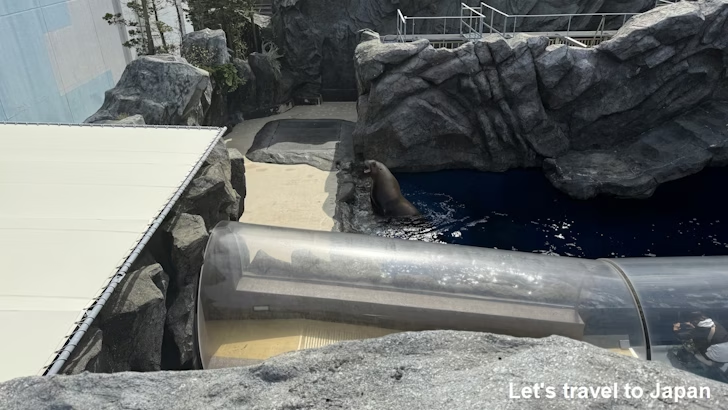
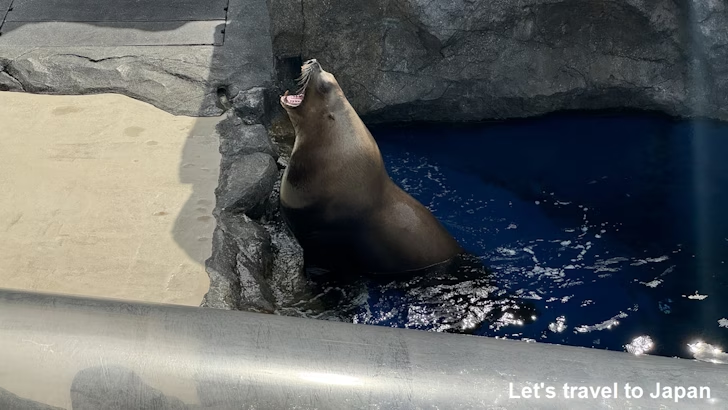
C:Ancient Seas
In "Section C:Ancient Seas," you can see creatures called "living fossils," such as the nautilus and horseshoe crab, which have hardly changed in appearance over the ages.
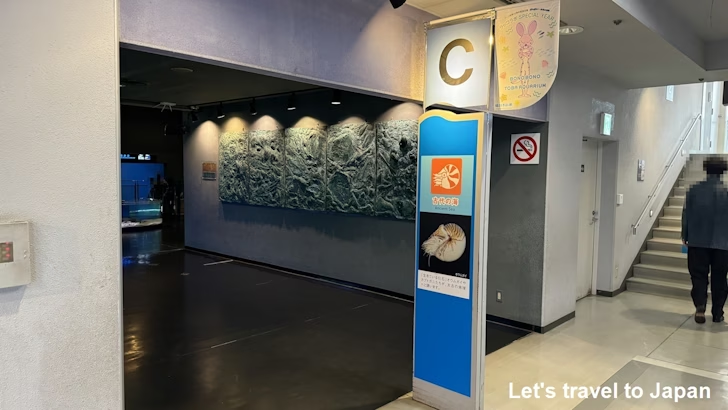
The Asian Arowana is found in Malaysia, Borneo, Indonesia, and other locations.
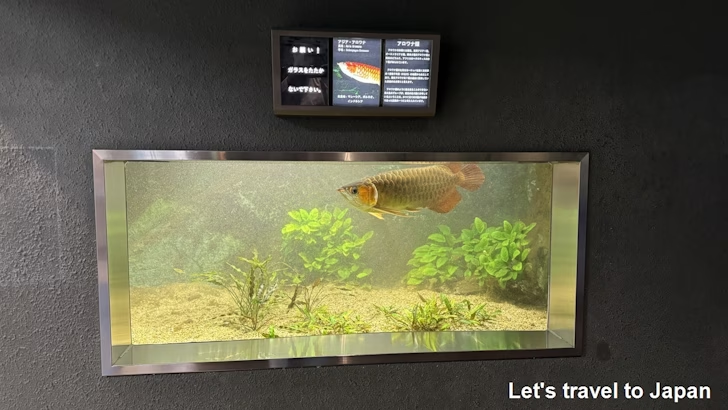
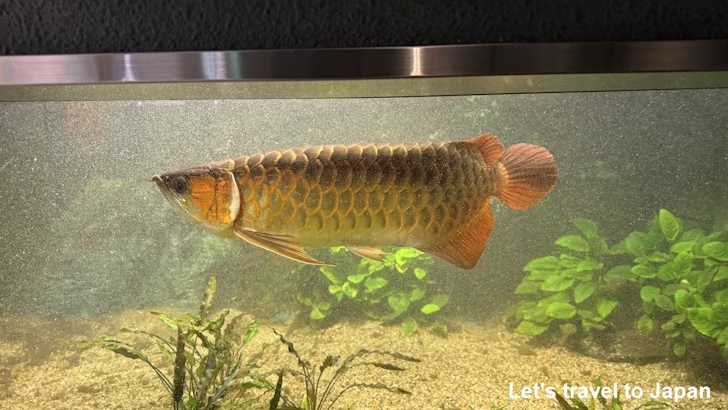
The Shortnose Gar and the Spotted Gar are presented.
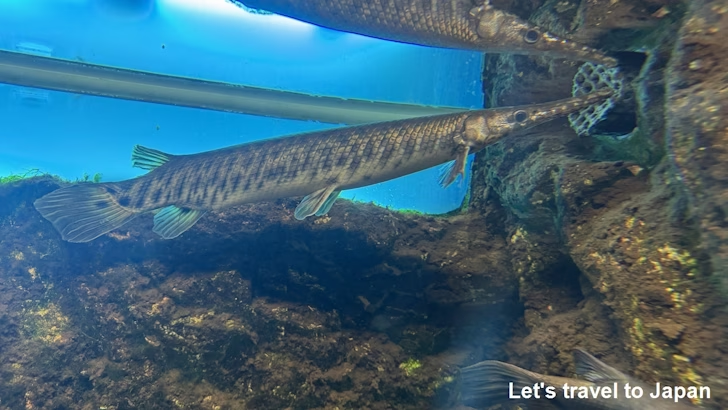
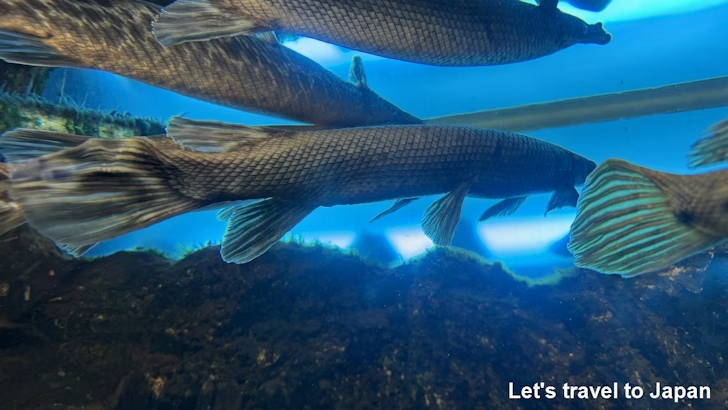
Polypterus bichir bichir and Polypterus endlicheri endlicheri are both found in Africa. However, fossils of this group have been discovered not only in Africa but also in Cretaceous strata in South America, suggesting that their ancestors lived on these continents before they separated.
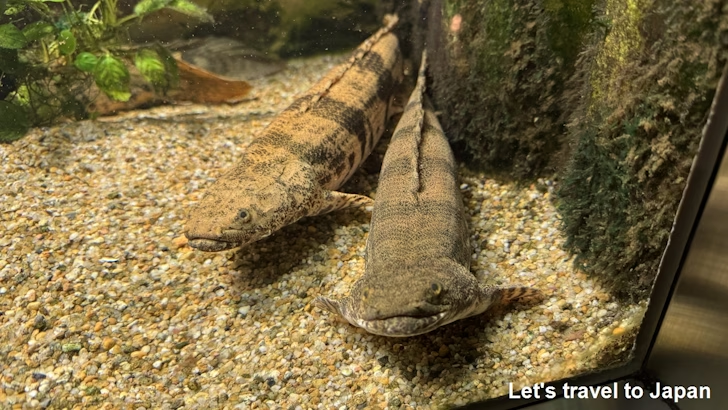
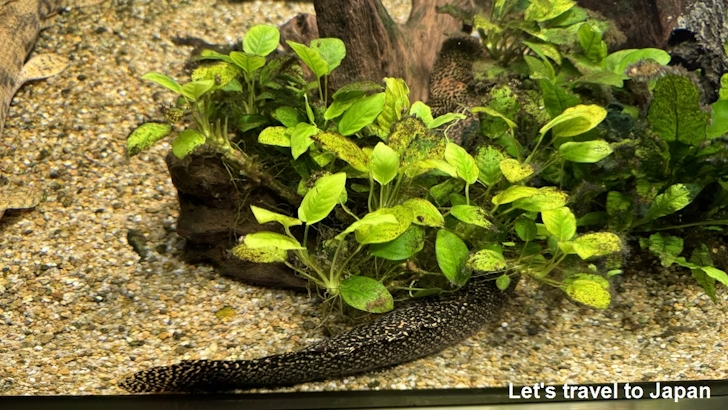
The Alligator Gar is discussed. Fossils of the gar have been found in Cretaceous and other strata across northern Eurasia, North America, India, and Africa, indicating that it thrived worldwide. The fossils found are not much different from its current appearance.
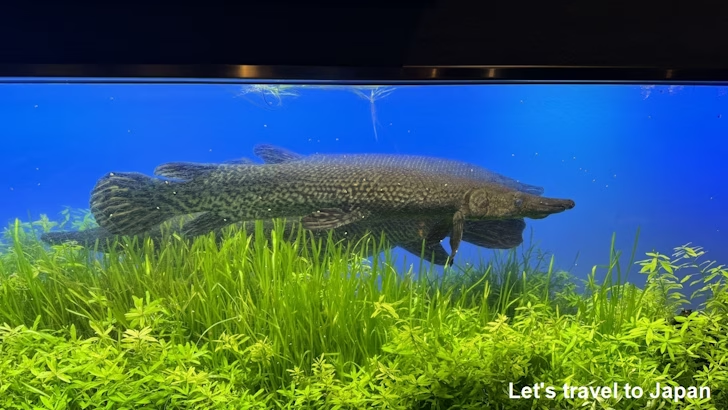
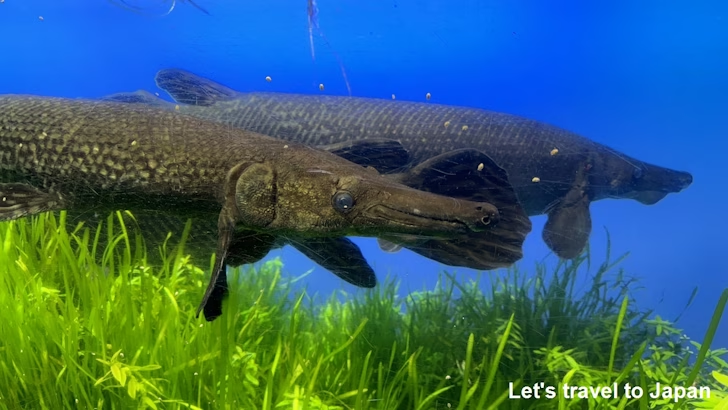
The Australian Lungfish is among the most primitive in the lungfish family.
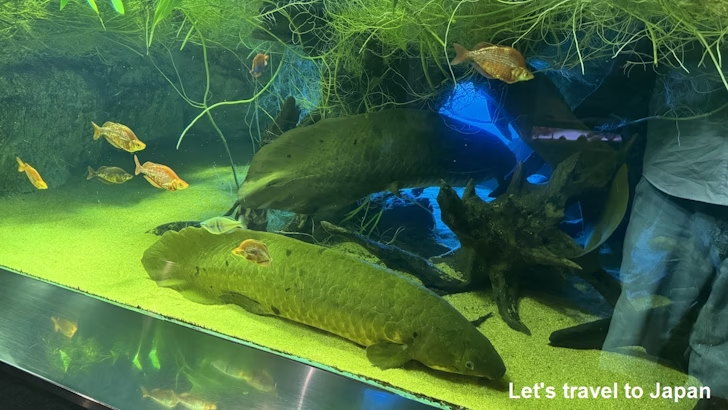
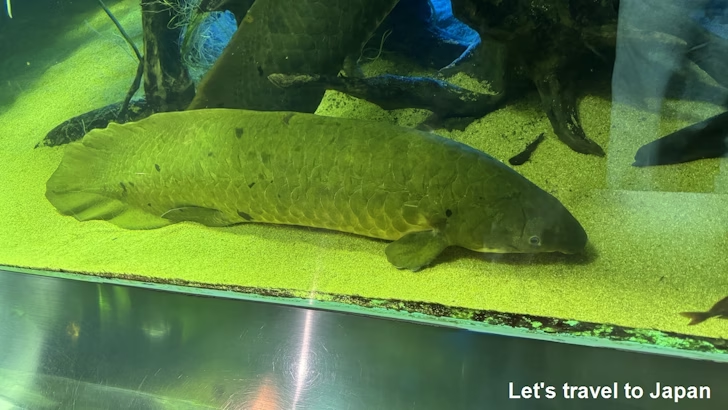
The Palau Nautilus is a species found around Palau. The ancestors of the nautilus appeared around 500 million years ago and their appearance has scarcely changed since then. The nautilus is considered a living fossil.
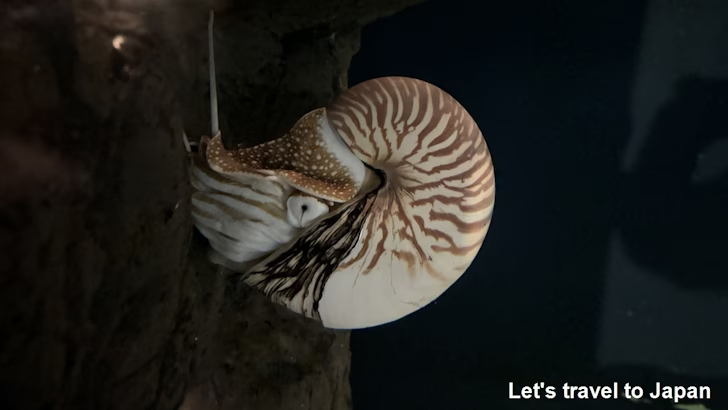
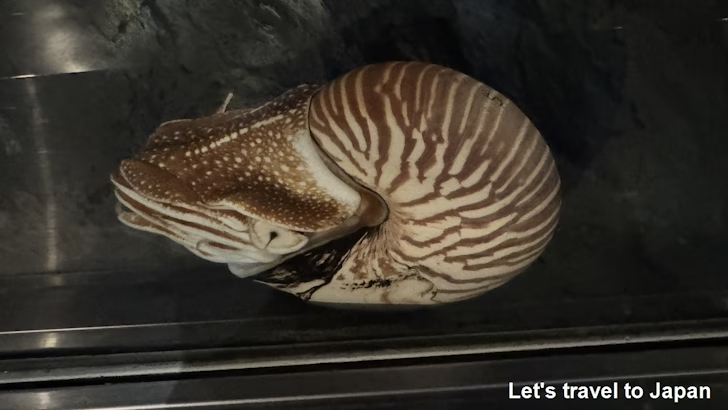
The American Horseshoe Crab lives along the northwest Atlantic coast, including the Gulf of Mexico. It is one of the living fossils, with fossils found in Triassic strata that are almost identical in form to the modern species.
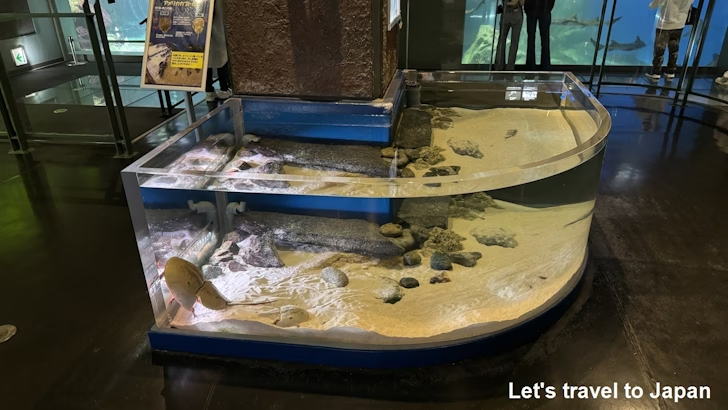
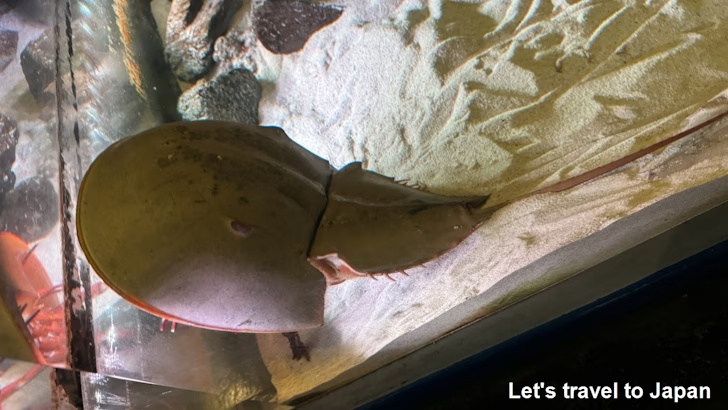
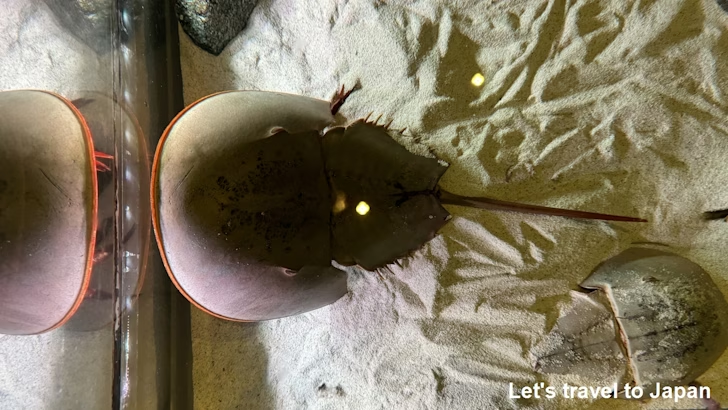
In the sturgeon tank, there are Sterlet, White Sturgeon, and Besters. The Bester is a hybrid species created by crossing Beluga and Sterlet. These primitive bony fish are sources of caviar.
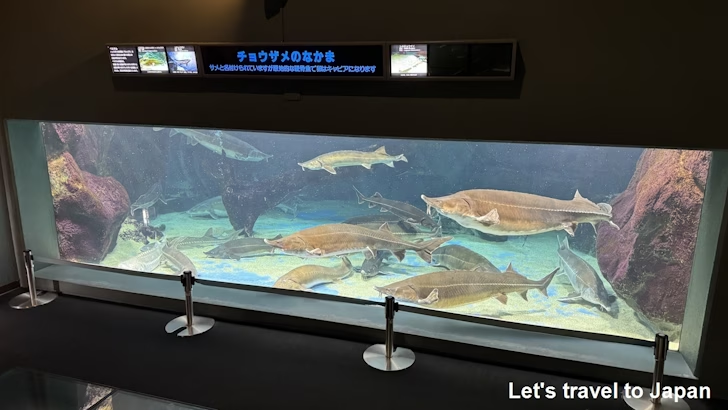
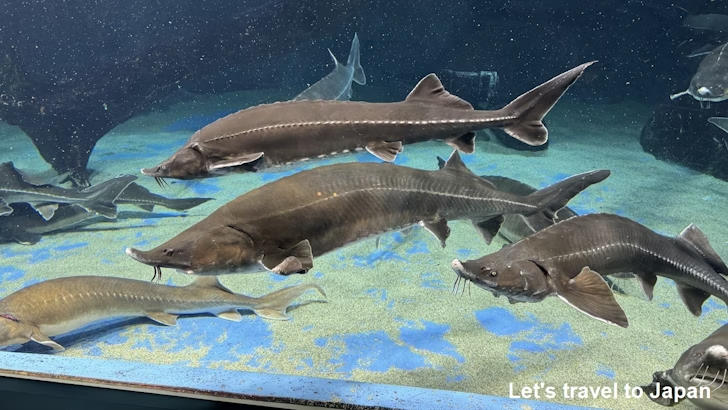
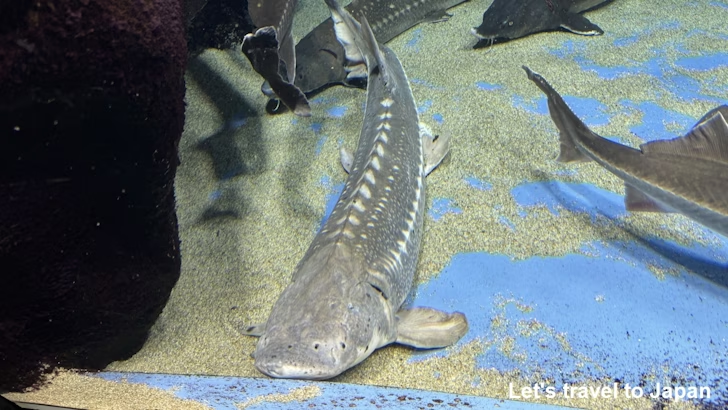
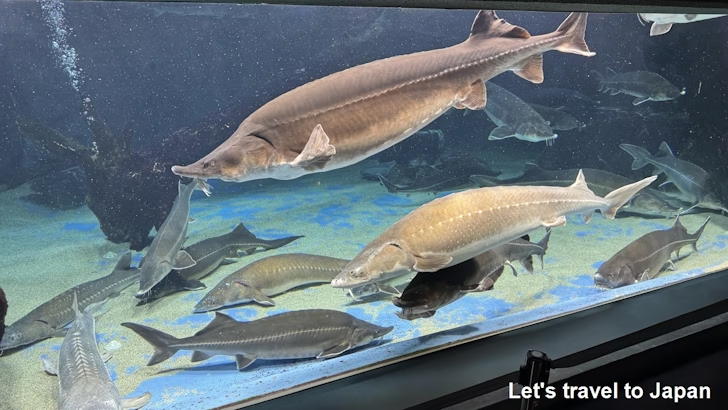
In the shark tank, there are Japanese Bullhead Shark, Red Stingrays, Sand Tiger Shark, and Banded Houndshark. It is said that the ancestors of today's sharks appeared during the Jurassic to Cretaceous periods. The form of sharks has remained almost unchanged since then, showing little significant evolution.
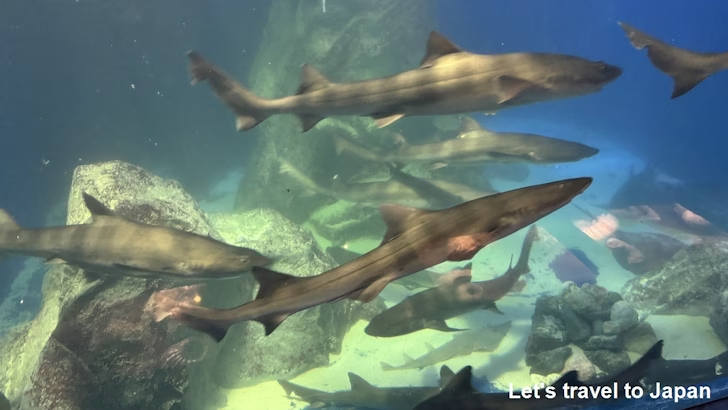
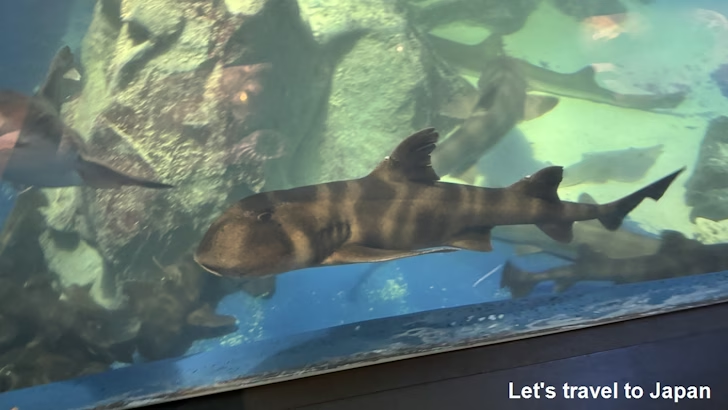
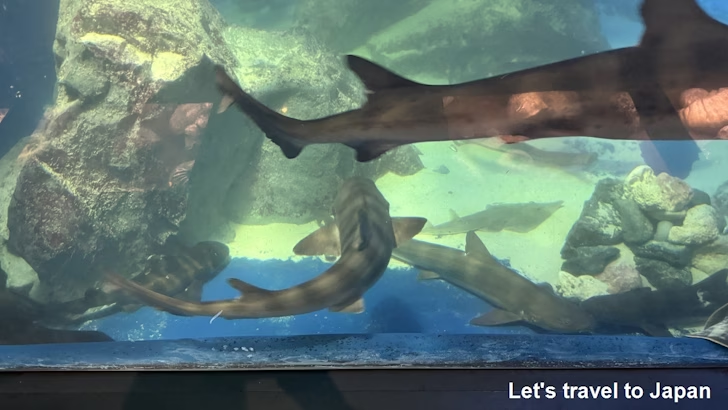
D:Coral Reef Diving
In "Section D:Coral Reef Diving," you can see tropical fish and other creatures living in coral reefs.
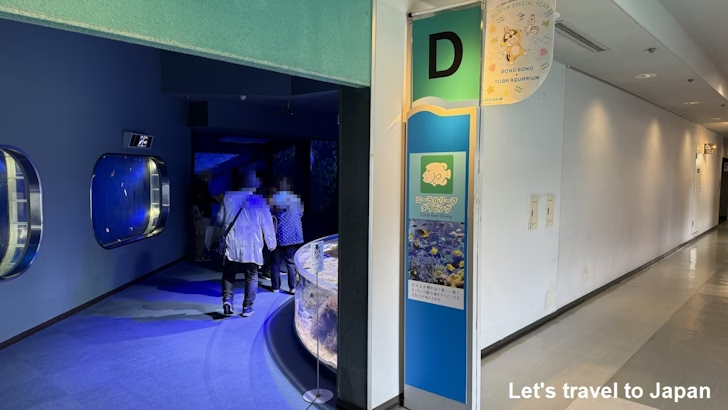
There is a tank near the entrance where colorful fish are swimming.
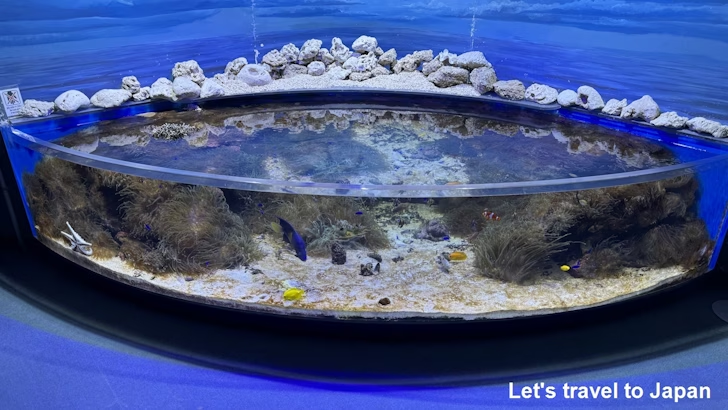
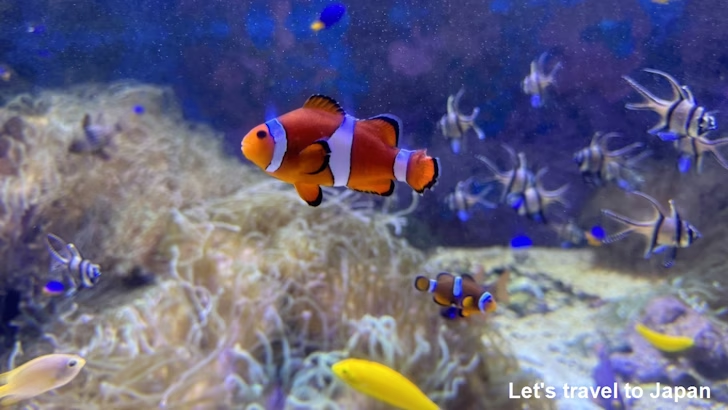
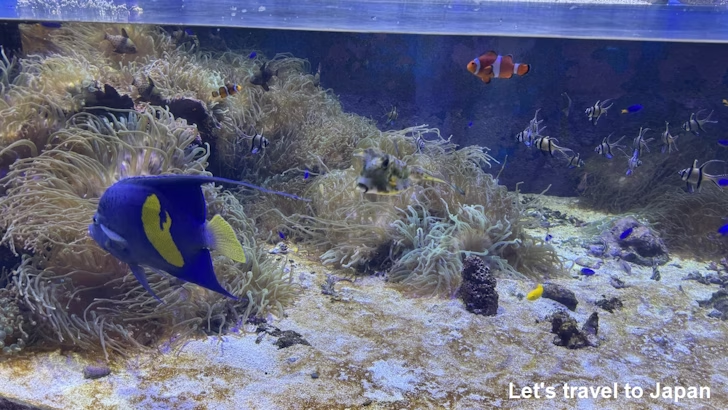
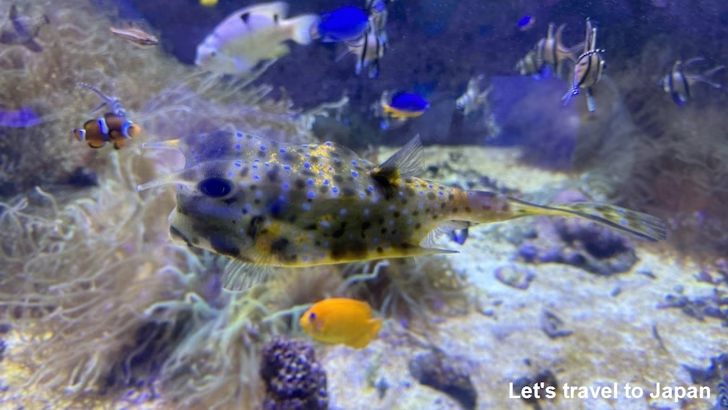
The Yellow Tang lives in the Indian and Pacific Oceans, and in Japan, it can be found as far north as Kochi.
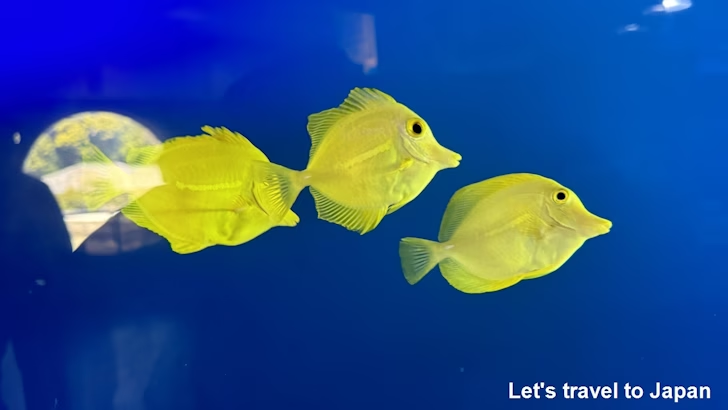
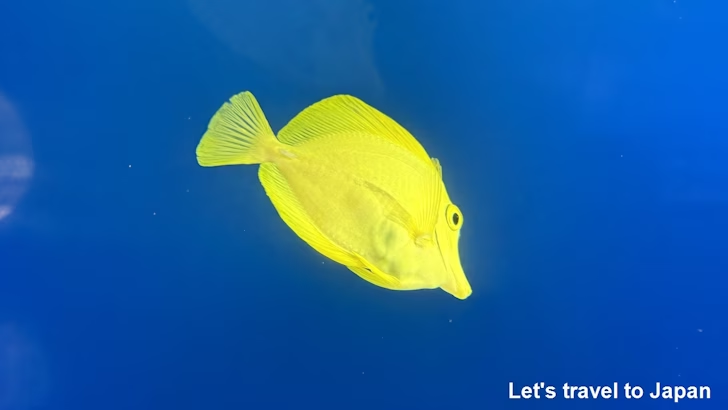
The Painted Spiny Lobster is a member of the lobster family, growing up to 30 cm in size. Its head is pink, making it very colorful. In Japan, it inhabits areas like the Ryukyu Islands.
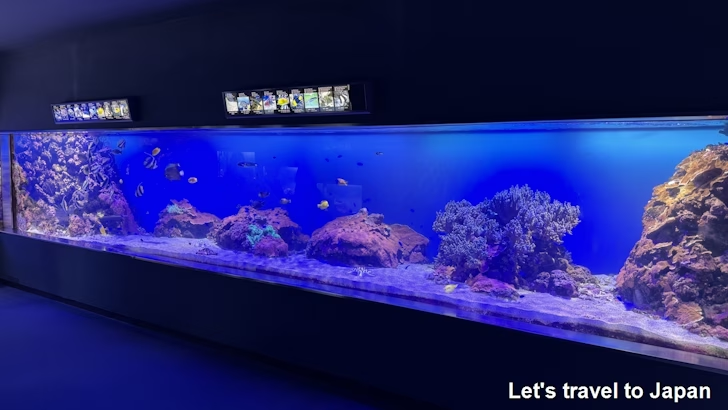
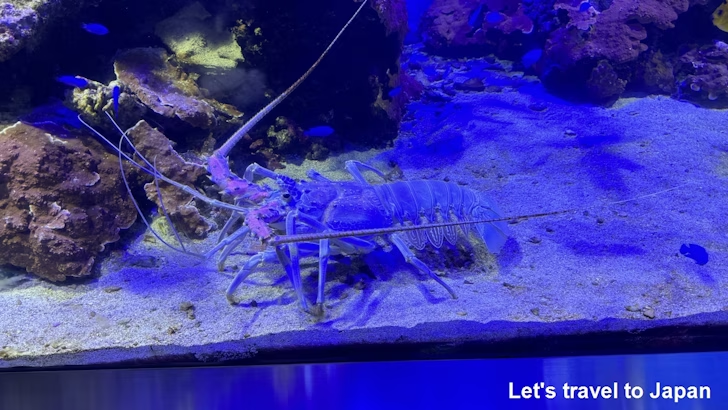
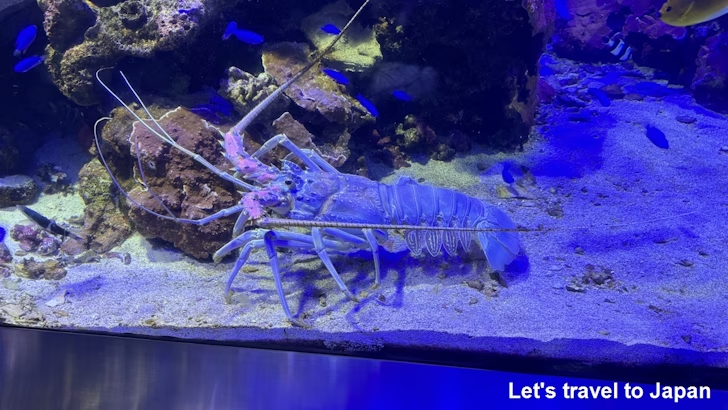
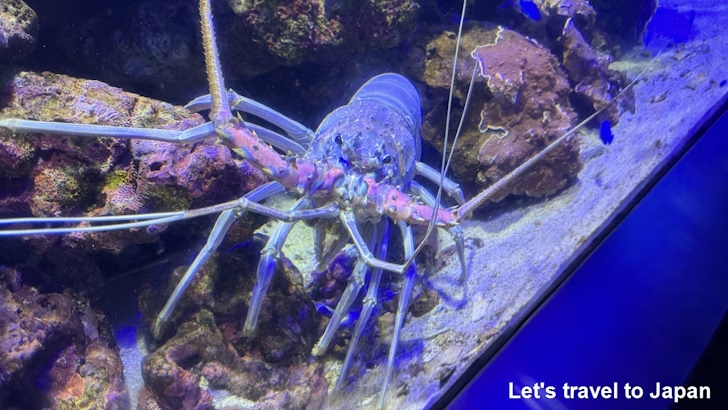
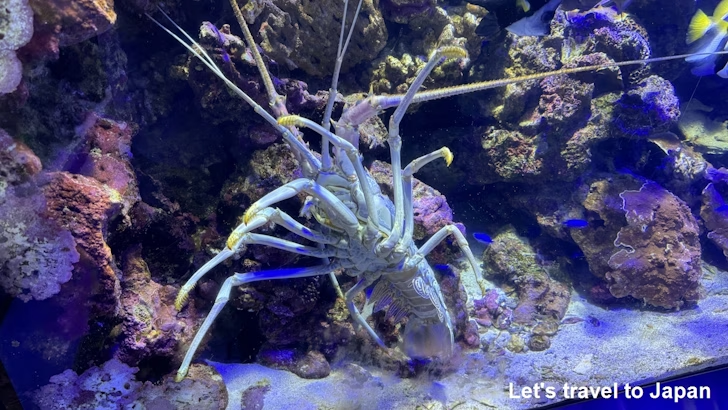
The Clown anemonefish and The Palette Surgeonfish are featured together. They are a popular combination known from movies.
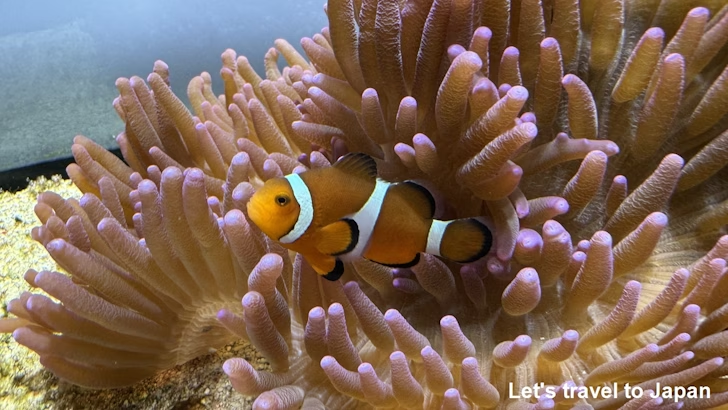
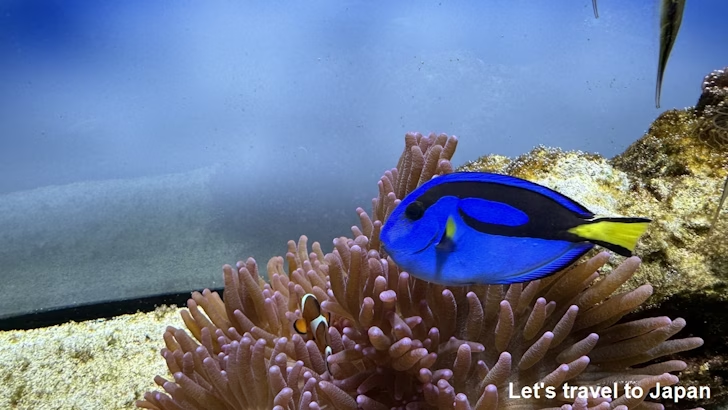
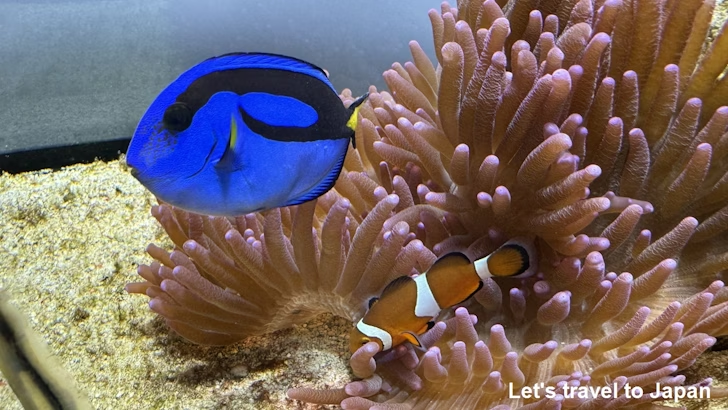
This tank houses various distinctive-looking pufferfish.
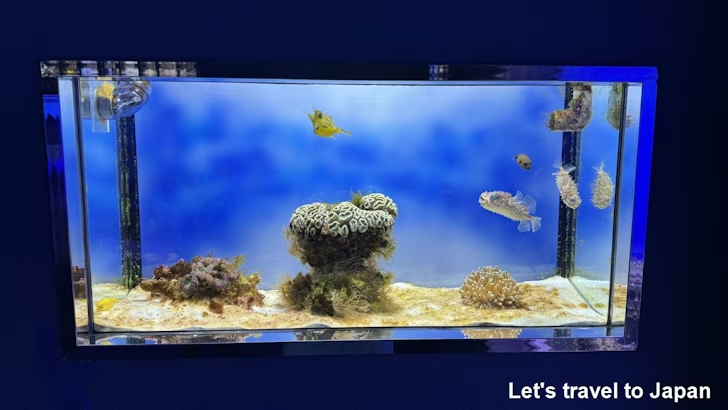
This is the Birdbeak Burrfish.
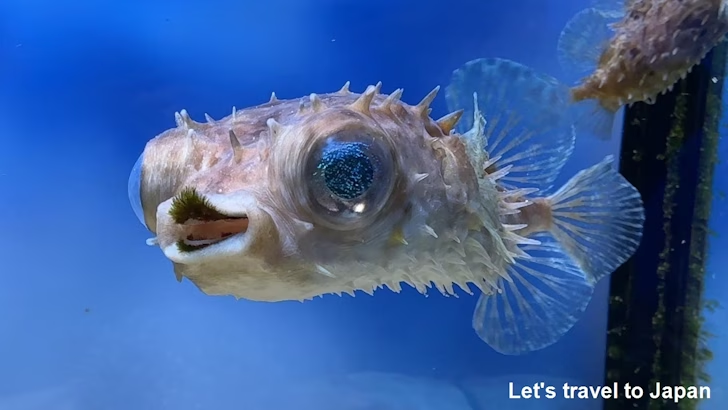
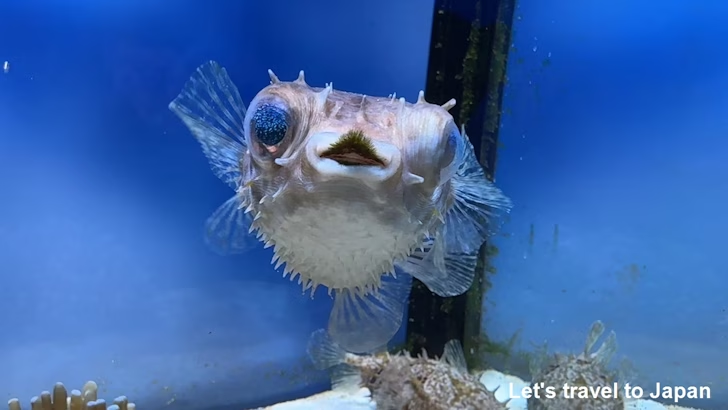
This is the Longhorn Cowfish.
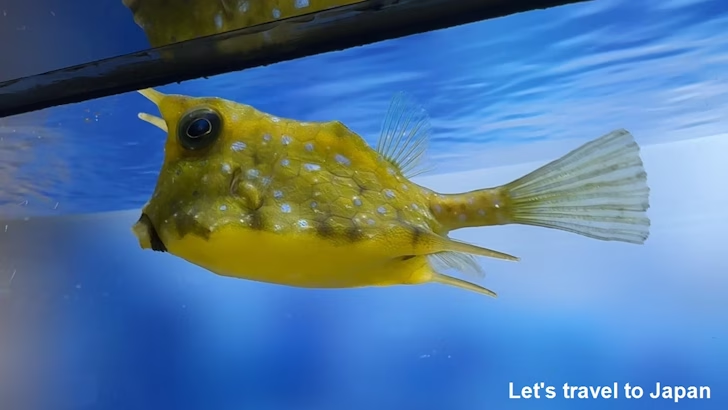
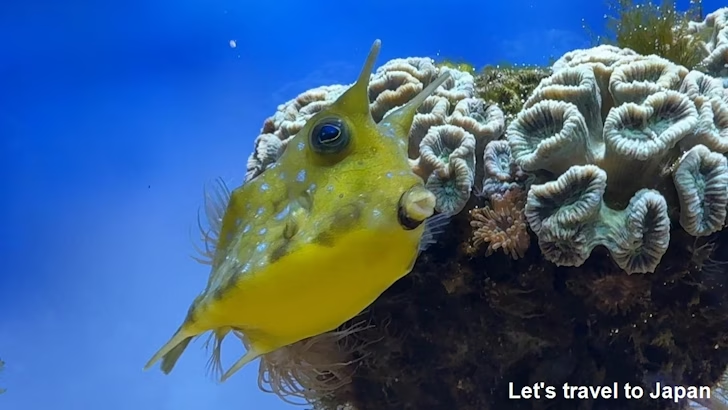
This is the Yellow Boxfish.
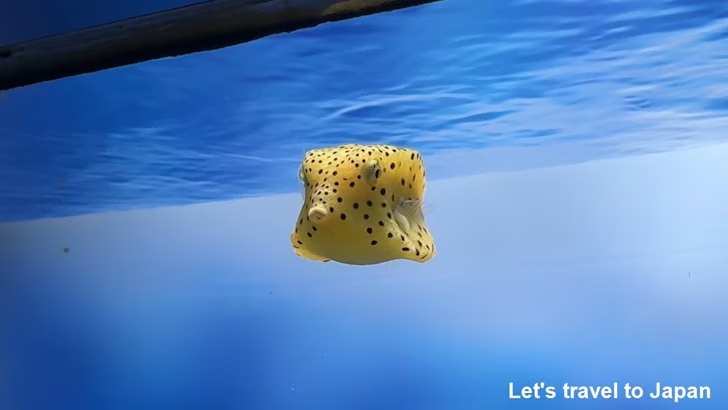
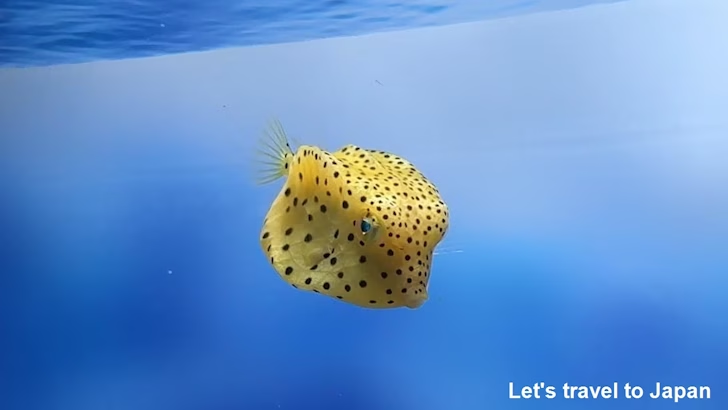
This is the Map Puffer.
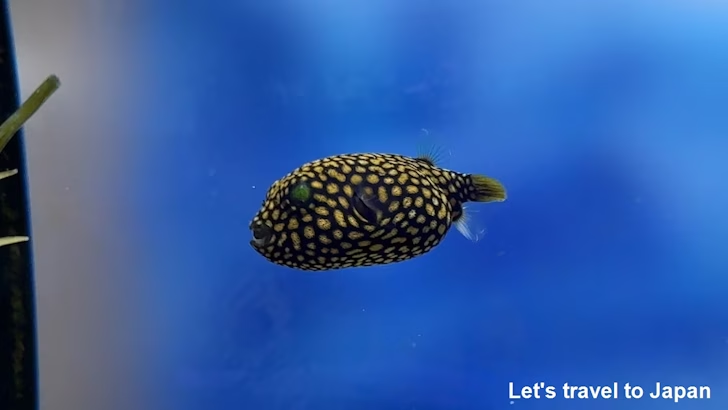
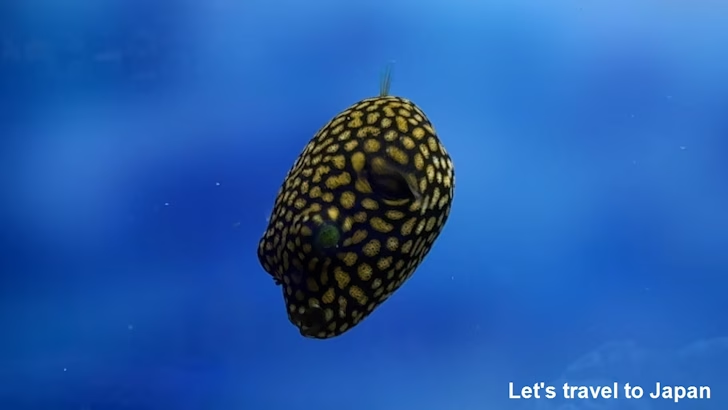
The back area of this section features a large tank that protrudes into the room, with glass on the front, top, right, and left sides, allowing visitors to see the fish swimming from multiple angles. Additionally, this tank is the same one that can be seen from the entrance hall, but it is being viewed from a different direction.
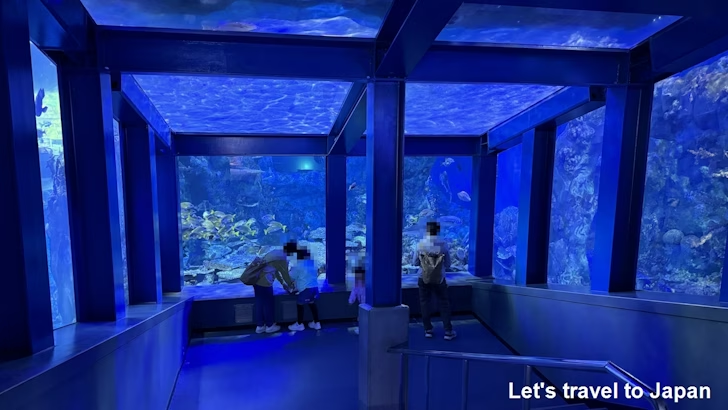
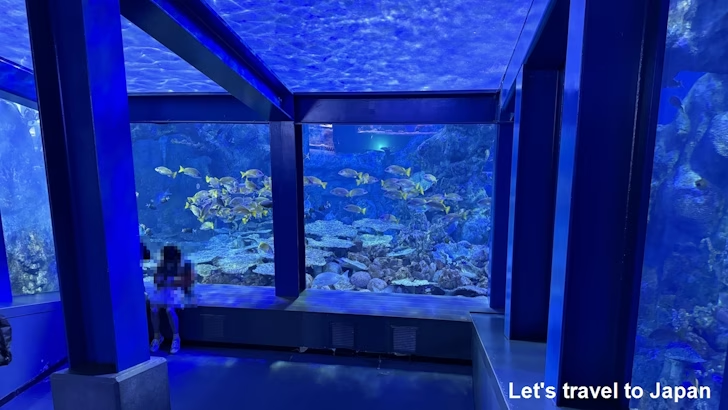
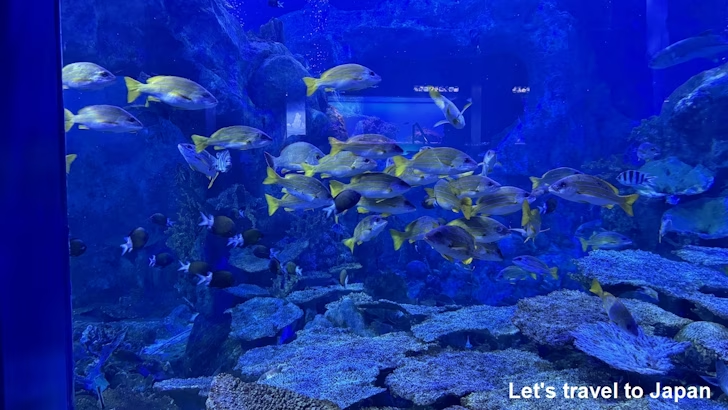
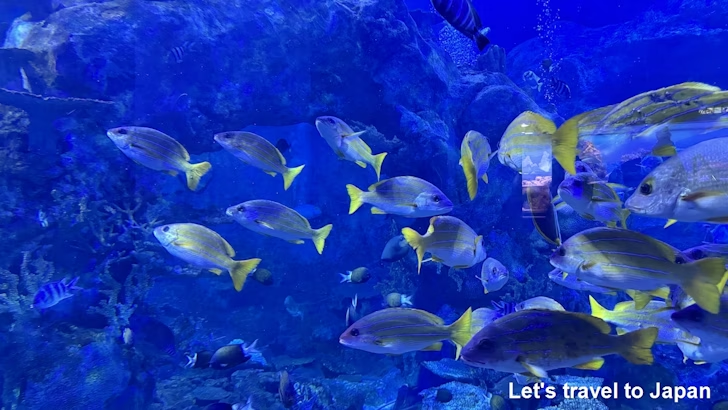
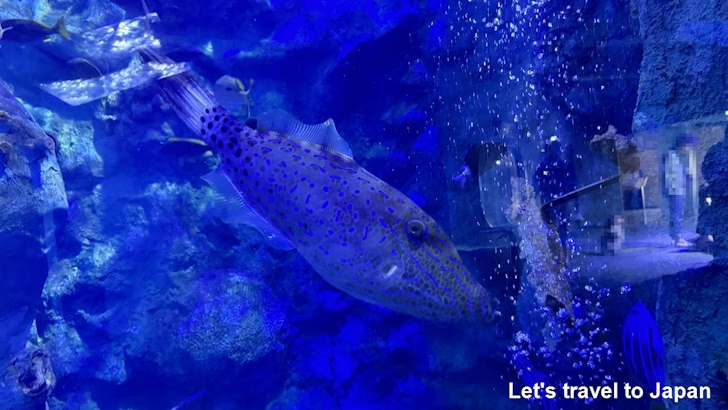
E:Ise-Shima and Seas of Japan
In "Section E:Ise-Shima and Seas of Japan," you can see creatures that inhabit Ise Bay and the nearby waters of Japan.
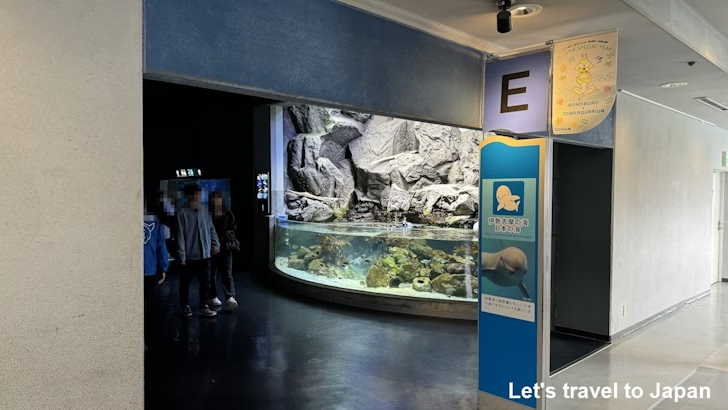
There is a tank at the entrance that houses Japanese Jack Mackerel, Stripey, Multicolorfin Rainbowfish, Bambooleaf Wrasse, and Red Naped Wrasse.
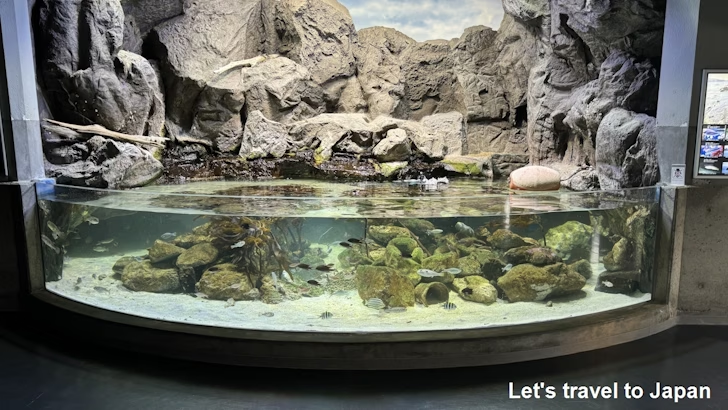
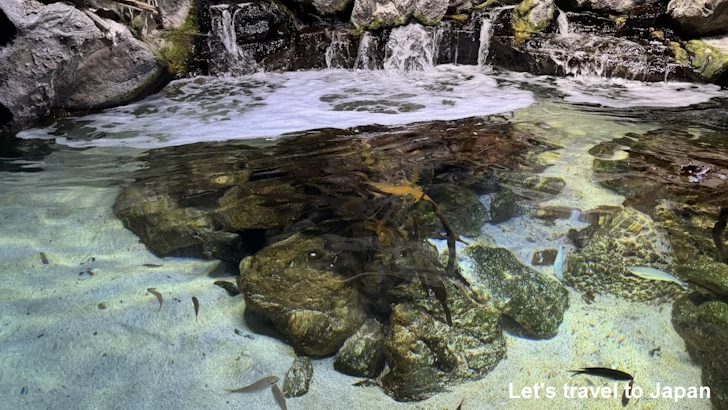
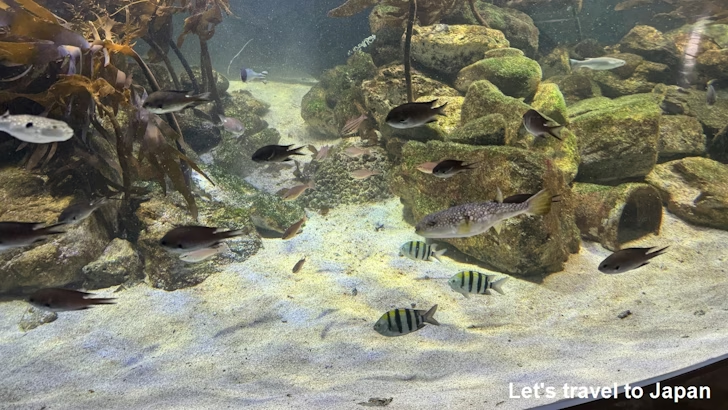
The tank includes the Luna Lion Fish and Red Lionfish. The Red Lionfish are found as far north as Suruga Bay, while Luna Lion Fish are found up to southern Hokkaido. (The photos below are believed to be all Red Lionfish).
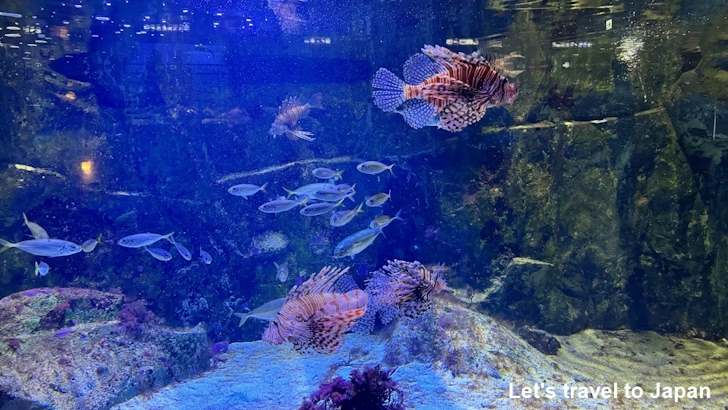
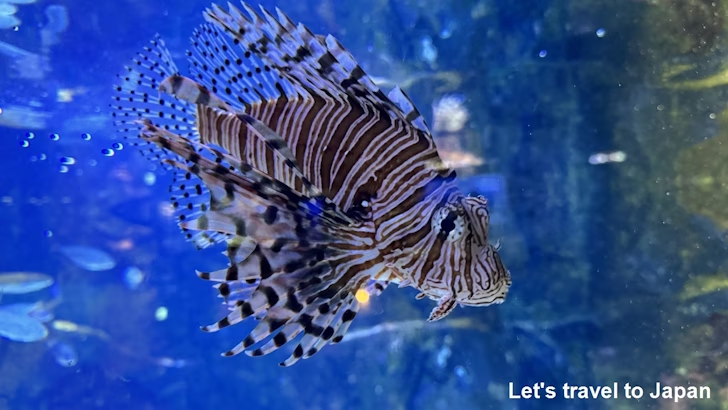
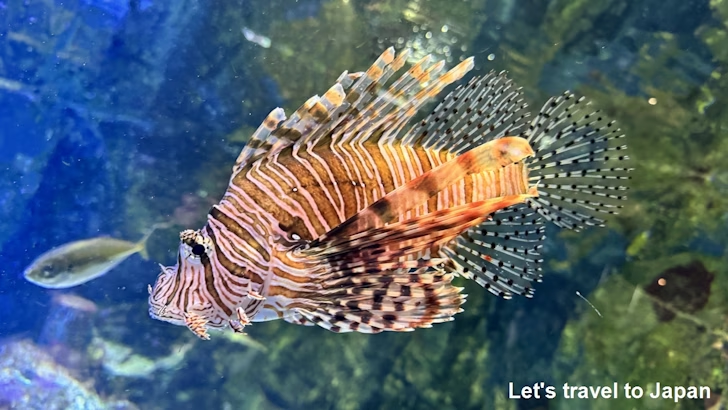
The Finless Porpoise, commonly found in Ise Bay and the Seto Inland Sea, is also displayed.
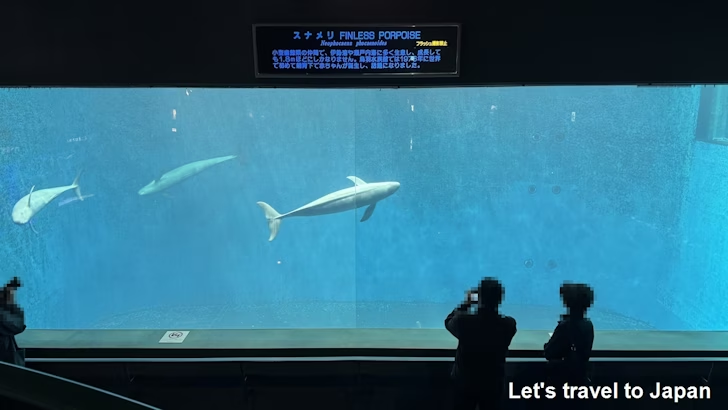
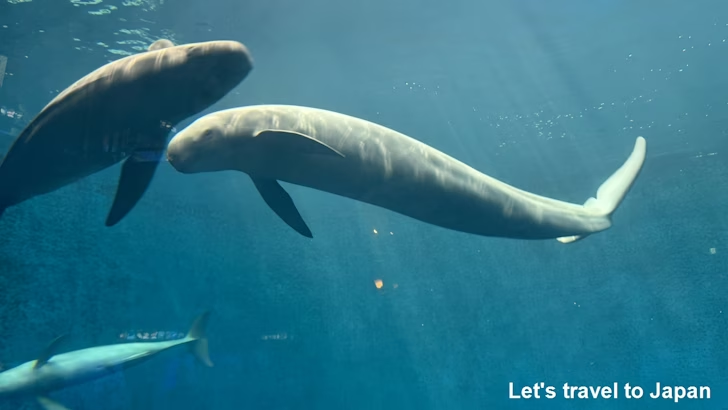
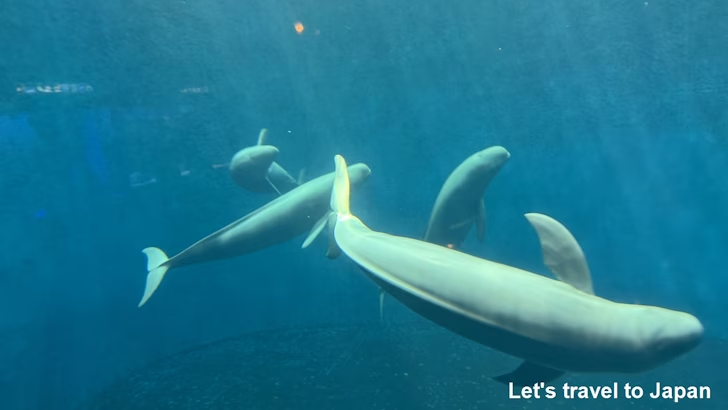
There is a tank dedicated to fish that live in the Kumano-nada Sea.
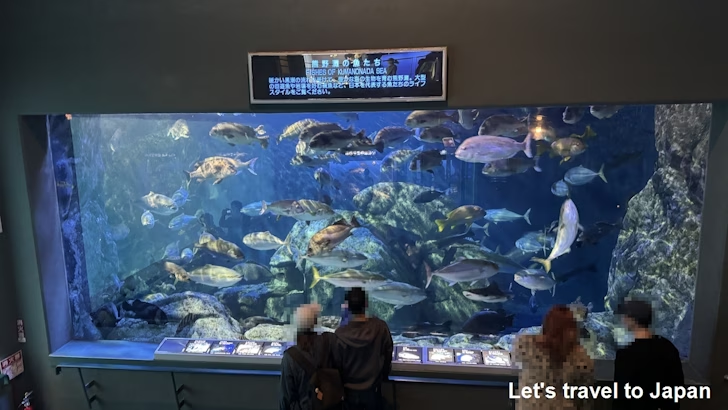
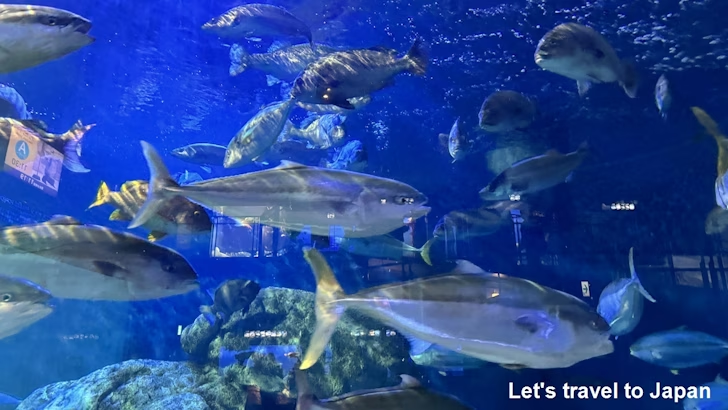
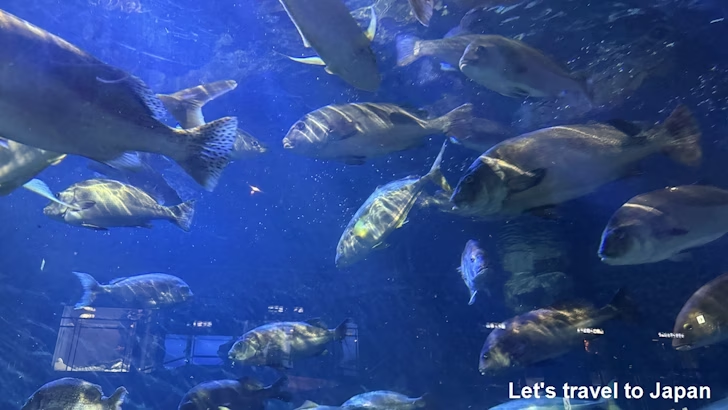
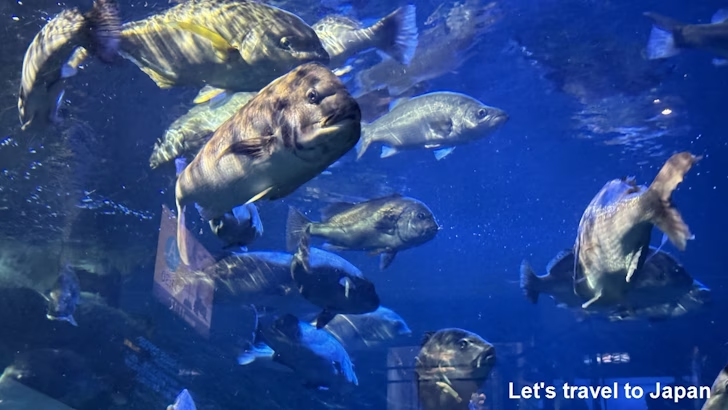
This is the Longtooth grouper. The Longtooth grouper can be found from the coast of Aomori and Niigata Prefectures to Yamaguchi Prefecture along the Sea of Japan, from Chiba Prefecture to Yakushima along the Pacific coast, as well as in the Seto Inland Sea, and from the Izu-Ogasawara Islands to Okinawa in the Tokara Archipelago.
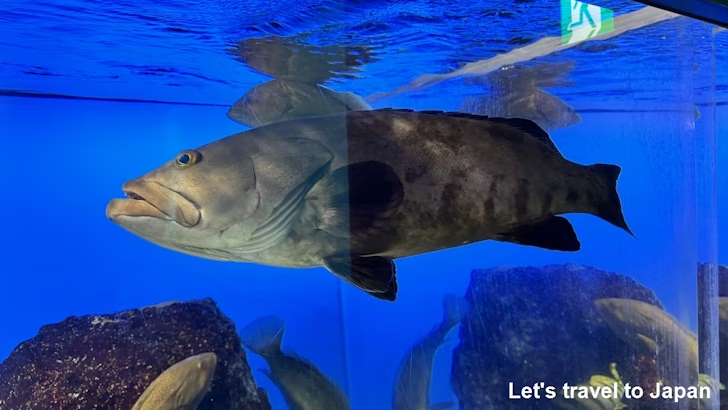
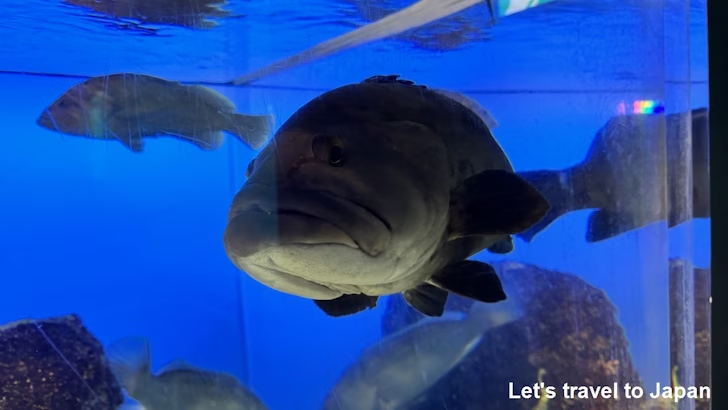
There is a tank featuring Moray Eels and Japanese Spiny Lobsters. There are five types of Moray Eels. In the natural ocean environment, Moray Eels and Japanese Spiny Lobsters often share the same space. Although octopuses are natural predators of Japanese Spiny Lobsters, Moray Eels prey on octopuses, which might explain why Japanese Spiny Lobsters are often found near Moray Eels. Moreover, Moray Eels do not prey on Japanese Spiny Lobsters as they are too hard to eat.
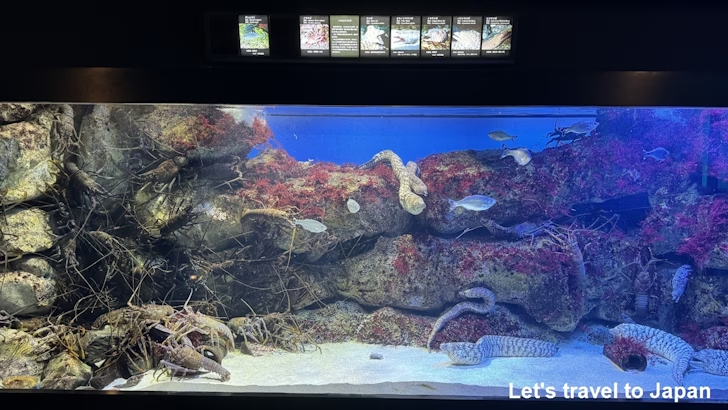
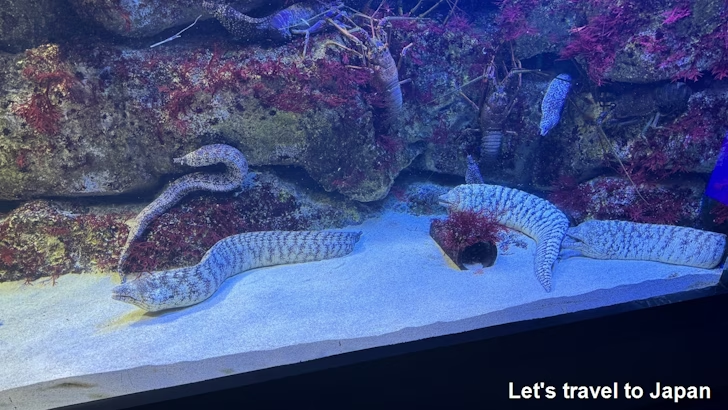
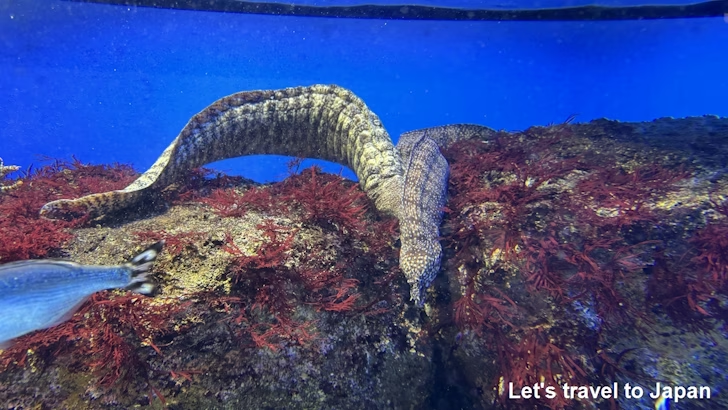
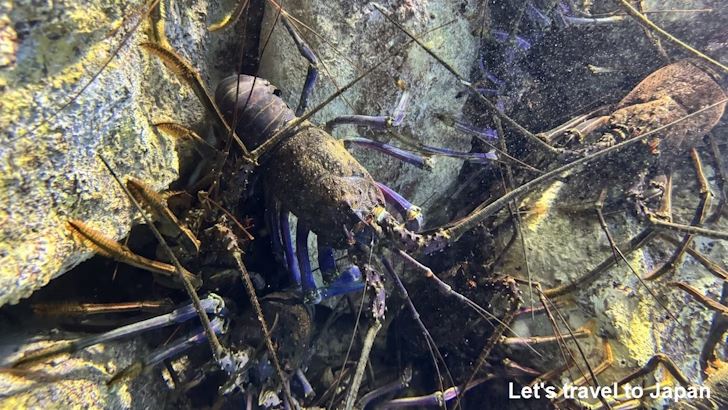
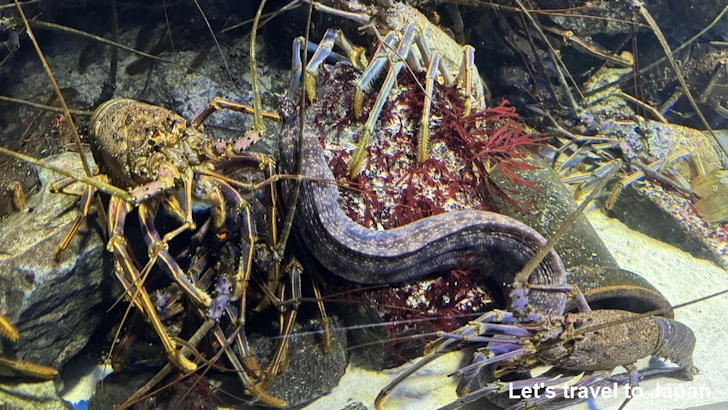
The Giant Spider Crab is present as well. These crabs are found from Iwate Prefecture to Kyushu along the Pacific coast.
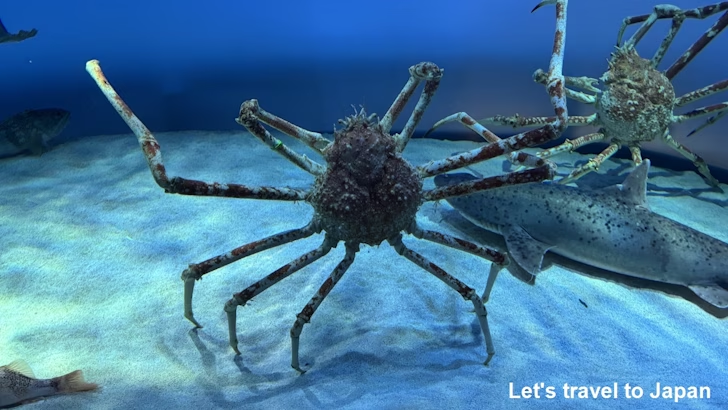
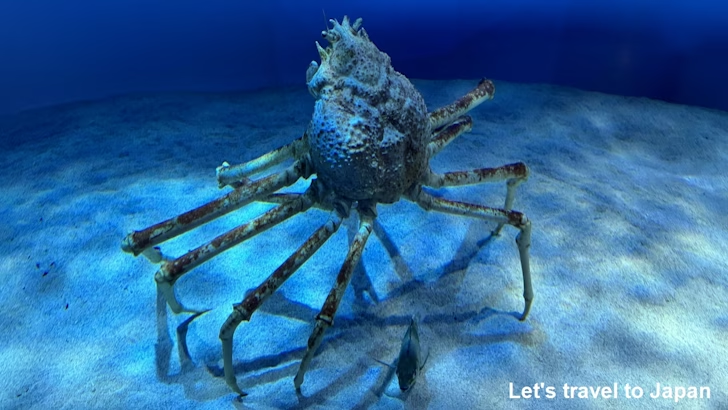
The Pacific Giant Octopus resides in this area, living in central Honshu and further north. When its arms are spread out, it can measure from 3 to 5 meters, making it one of the largest octopuses.
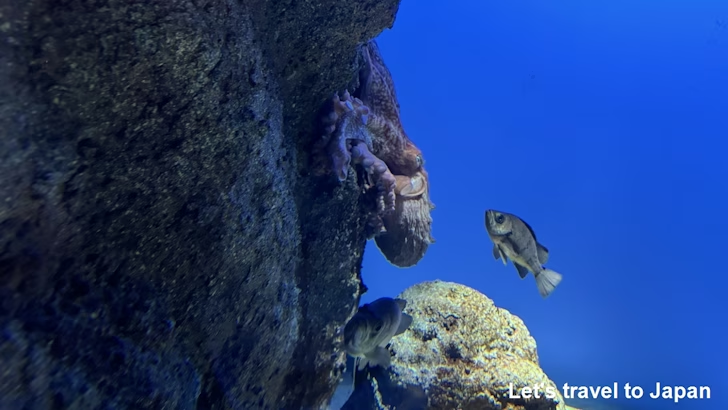
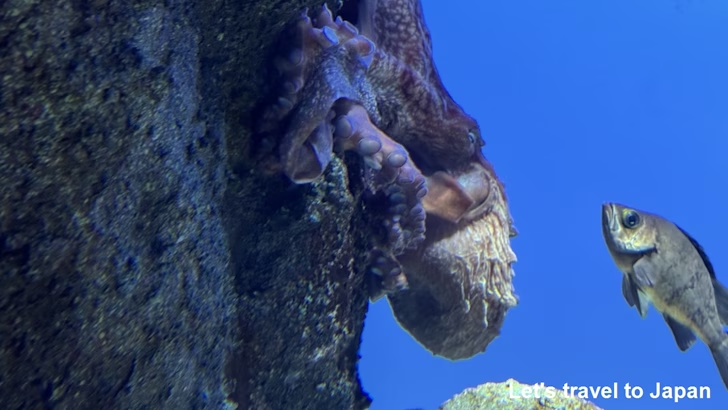
There are many other tanks in this area, where you can observe creatures from Ise-Shima and the nearby seas of Japan.
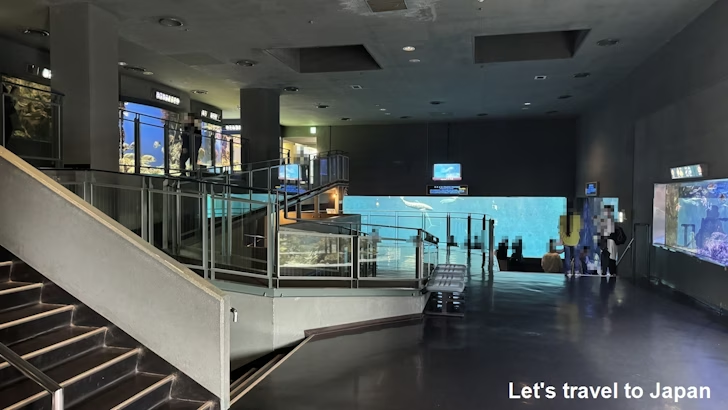
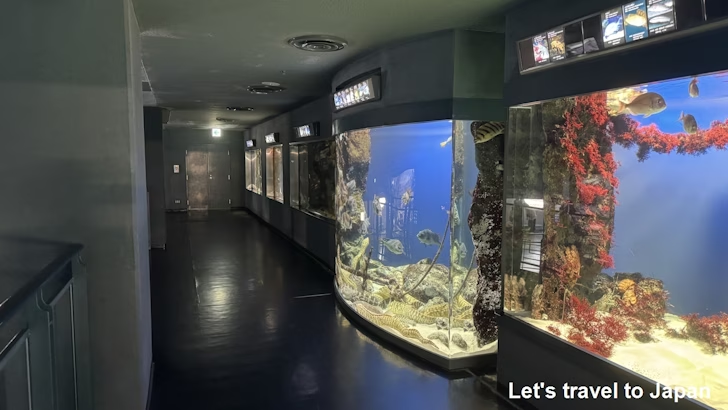
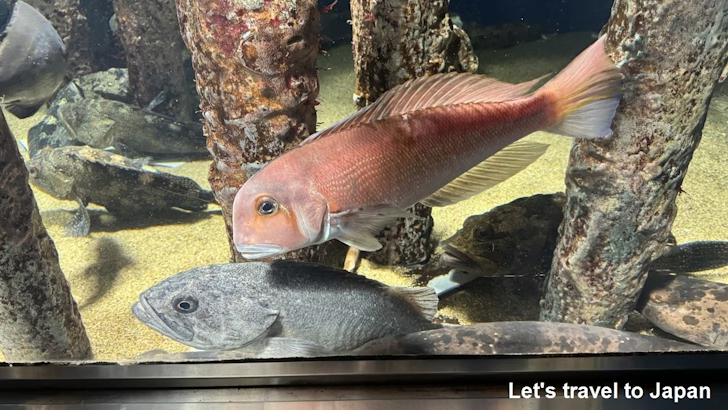
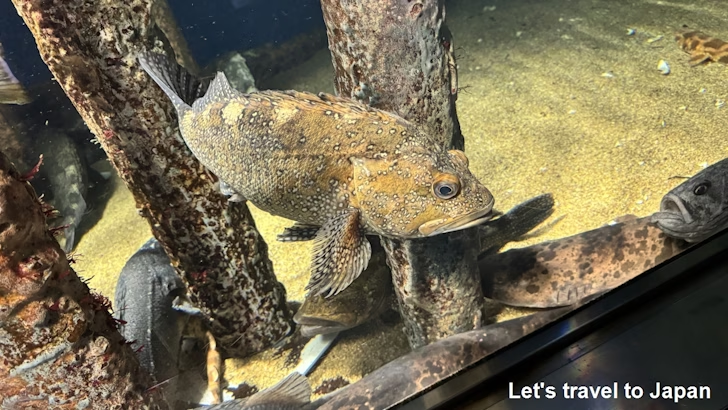
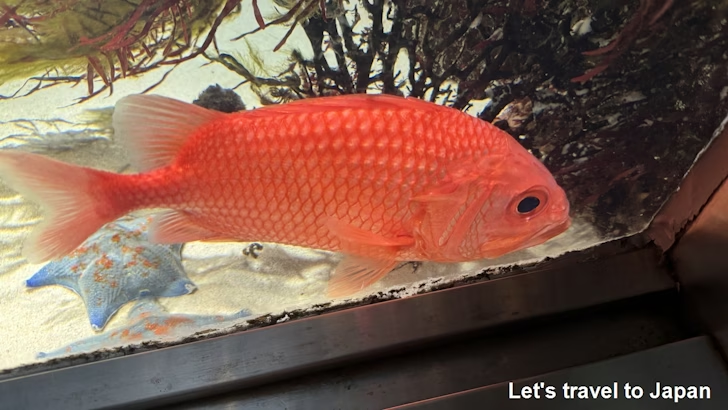
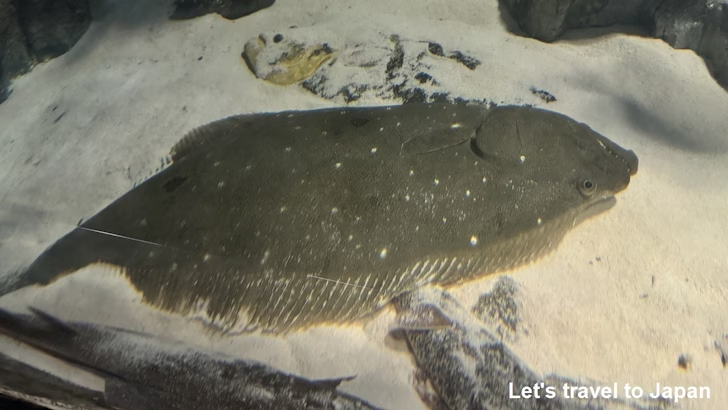
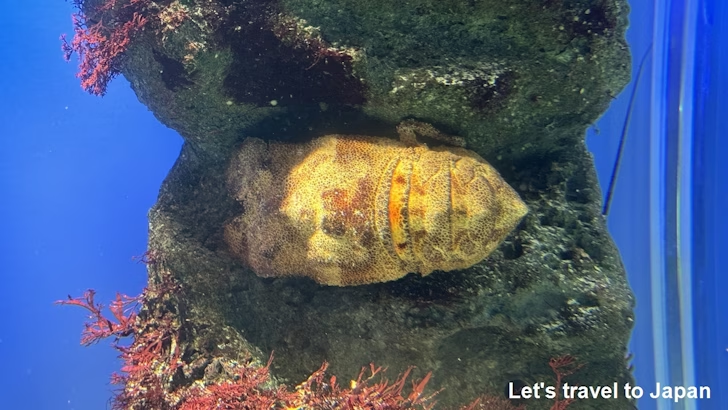
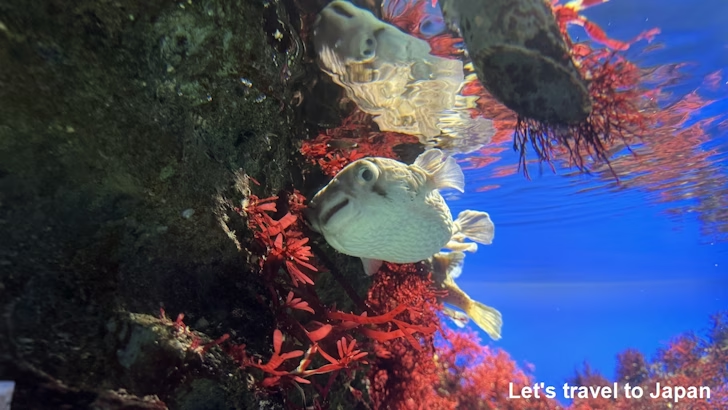
Additionally, if you go to the far end of the second floor, you can view the Finless Porpoise tank from above.
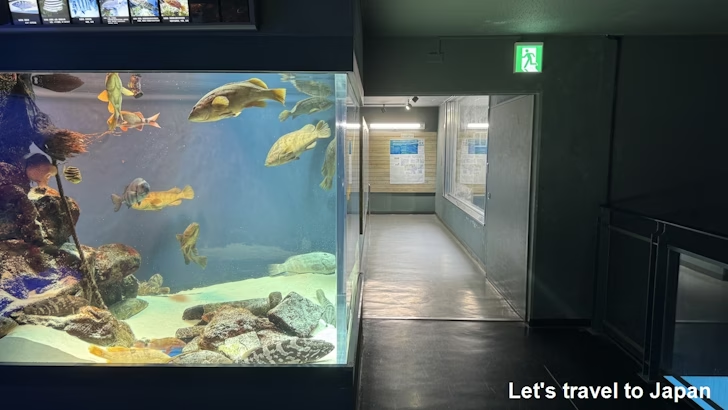
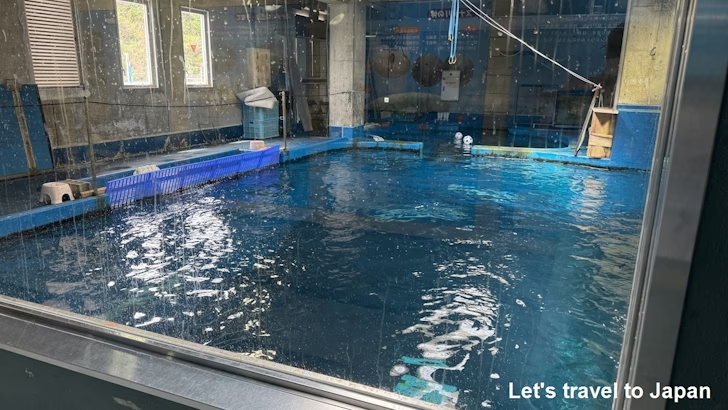
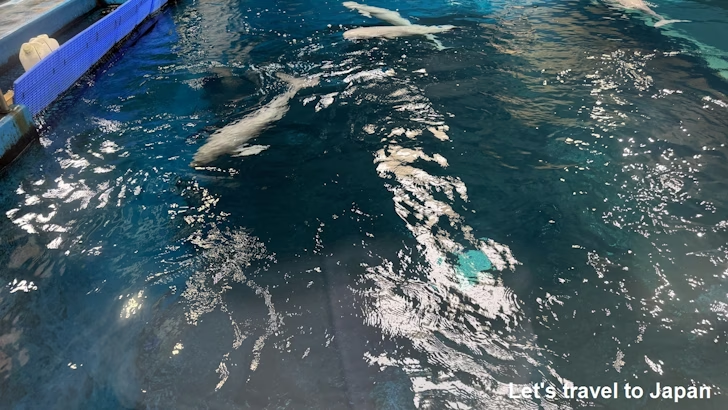
F:Jungle World
In "F: Jungle World," you can see animals that live in tropical rainforest climates.
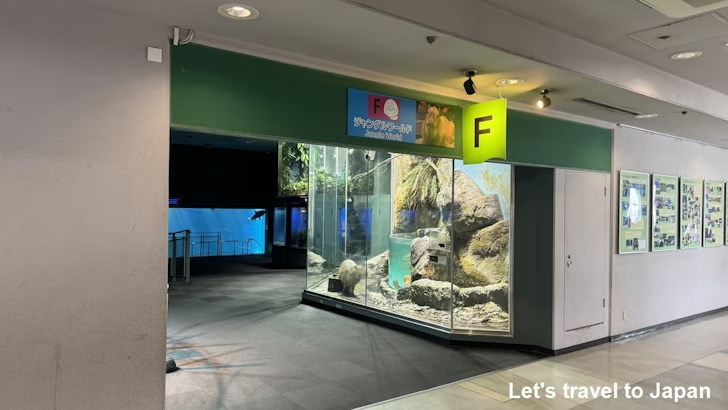
Near the entrance, there are capybara. Their habitat is in the Amazon basin in eastern South America. Capybaras are the largest rodents, growing to a body length of 105 cm to 135 cm.
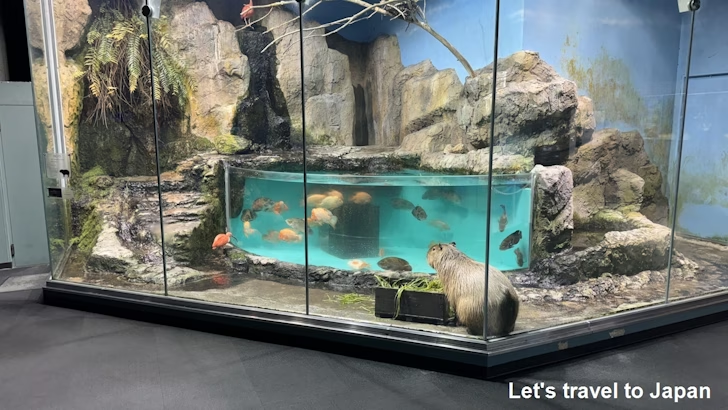
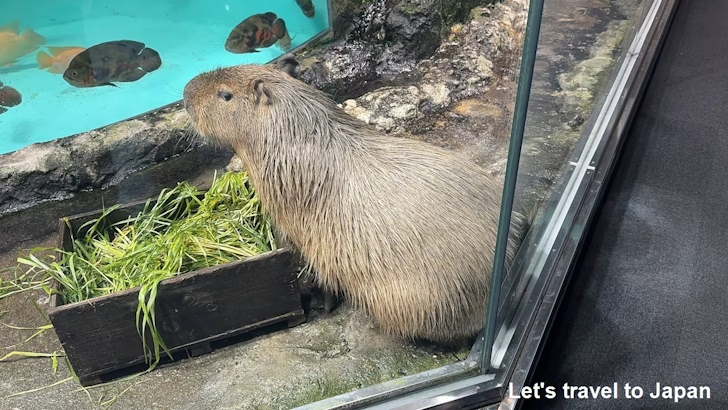
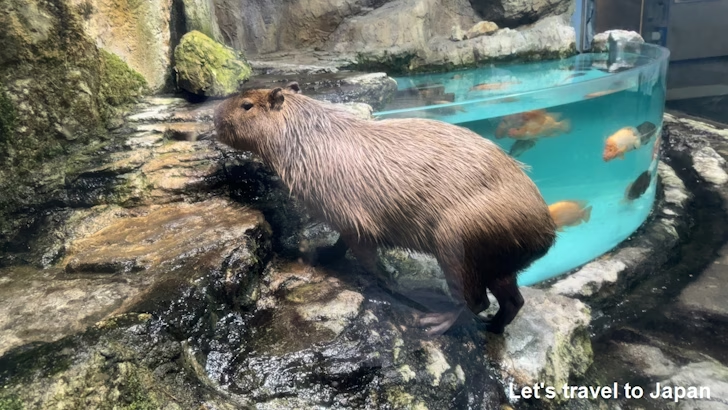
A capybara was swimming in the aquarium.
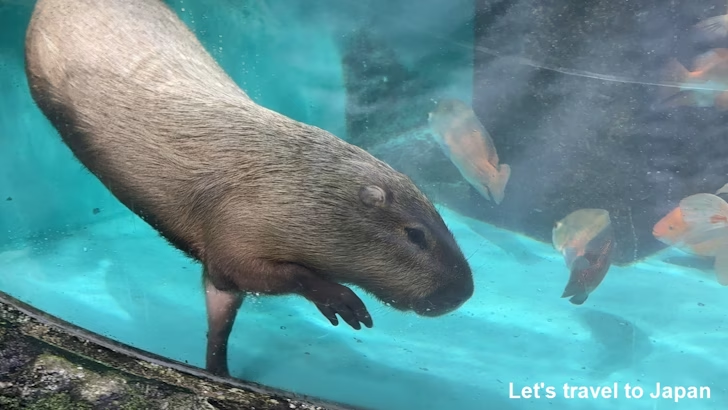
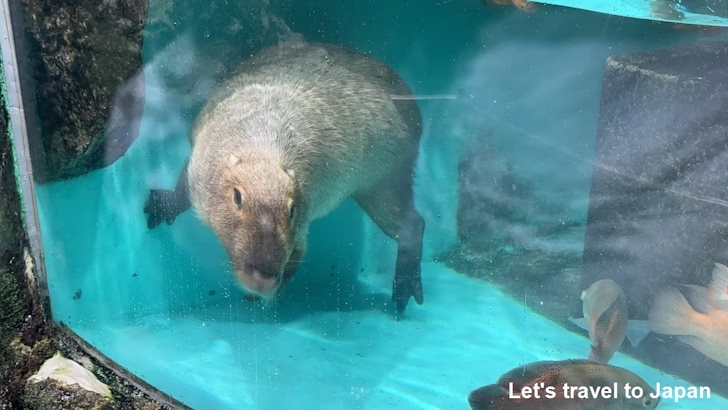
Higher up in the same area, there are scarlet ibis. Their habitat is in the coastal areas of northern South America. The juveniles are dark brown, but as they mature, they turn a vivid scarlet color.
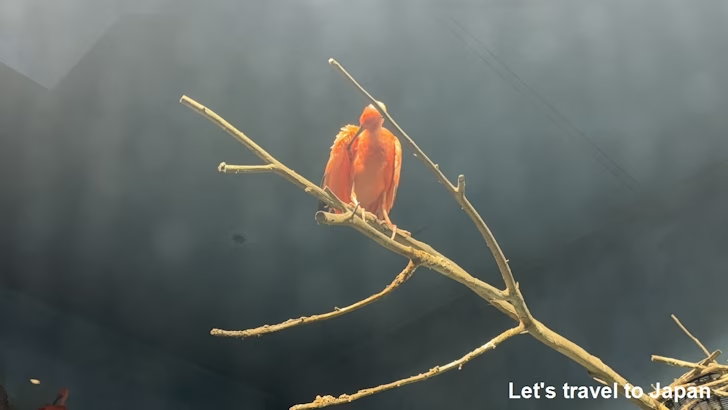
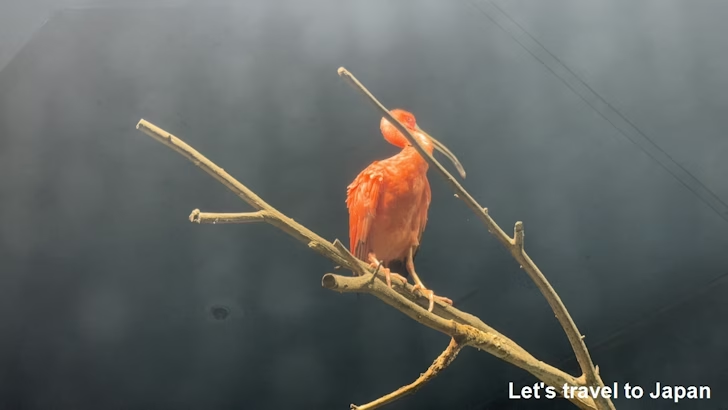
At the back of this area, there's a large tank with West African Manatee. Their habitat is in rivers from southern Mauritania to northern Angola in West Africa. They feed on aquatic plants.
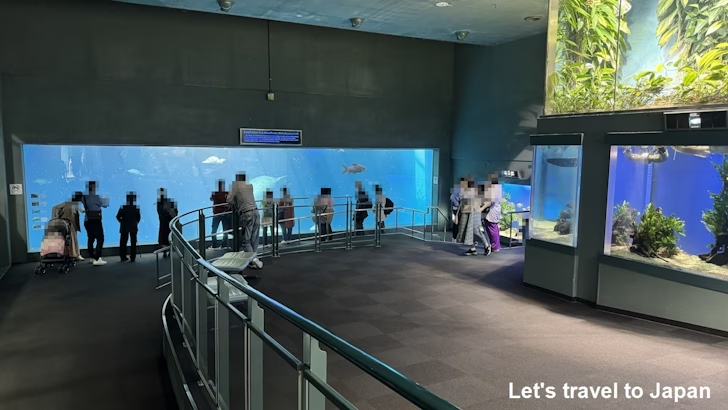
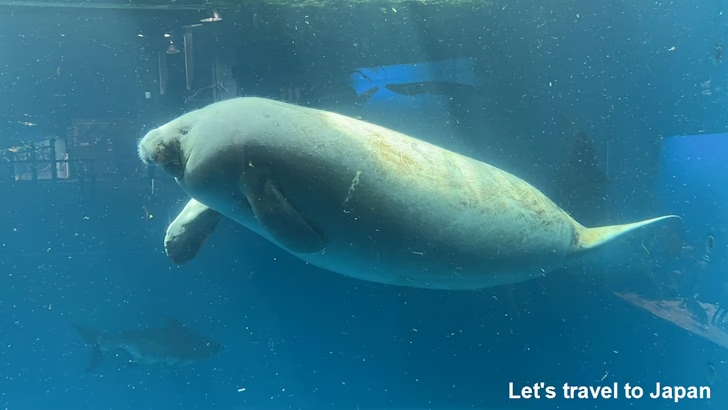
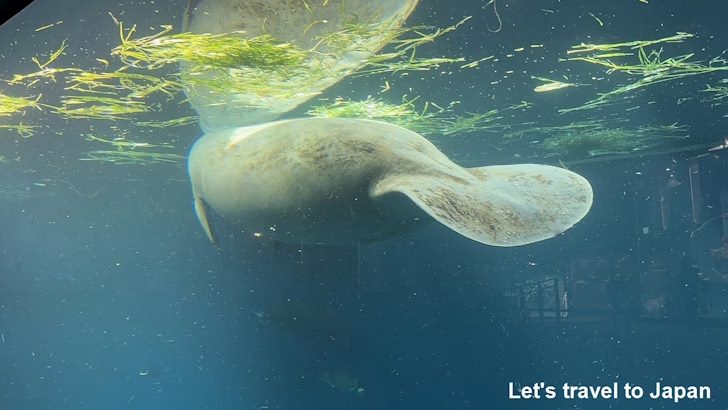
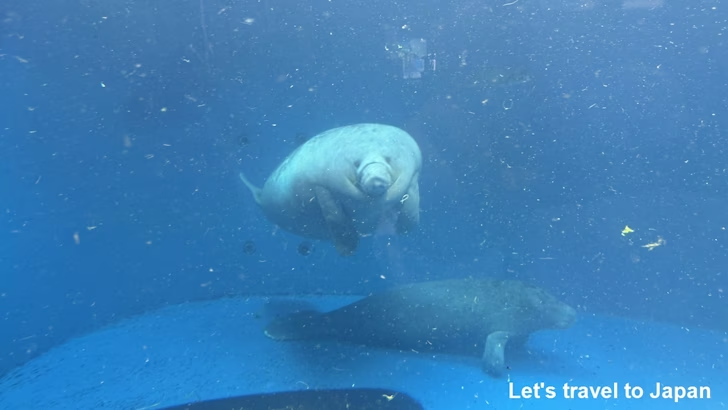
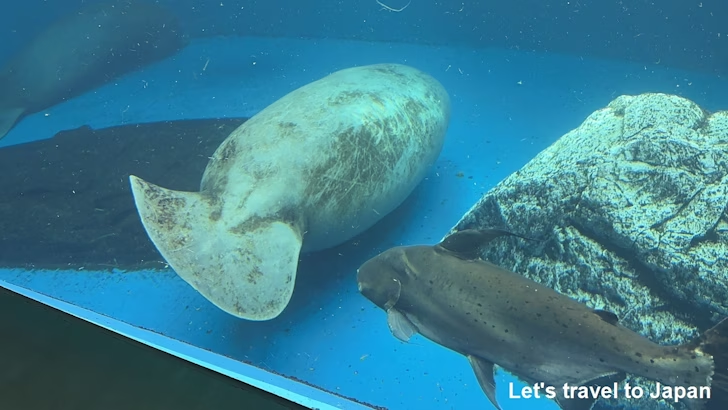
It's a tank featuring various fish from the Amazon basin in South America. Several types of fish, including pirarucu and redtail catfish, are swimming inside.
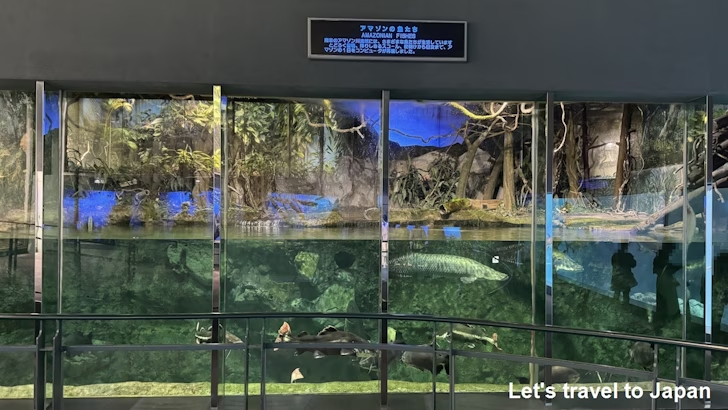
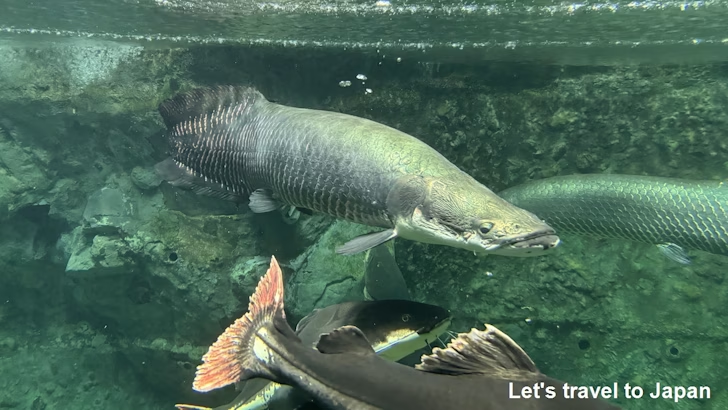
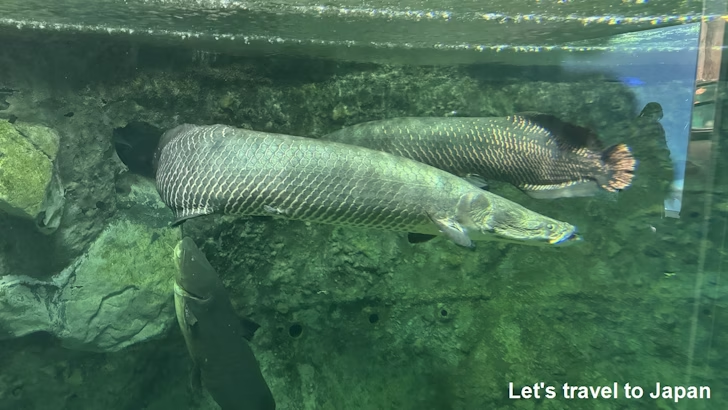
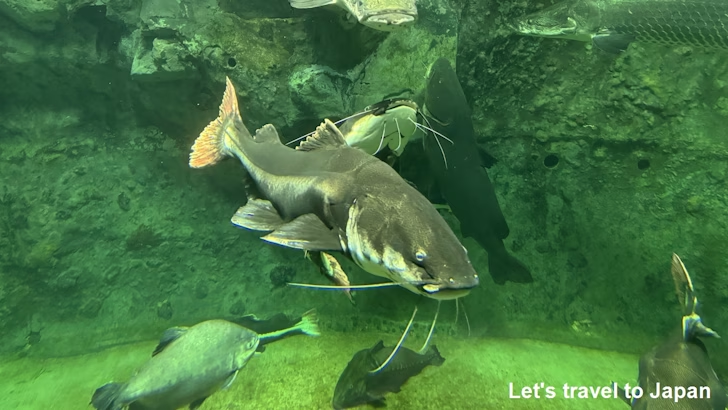
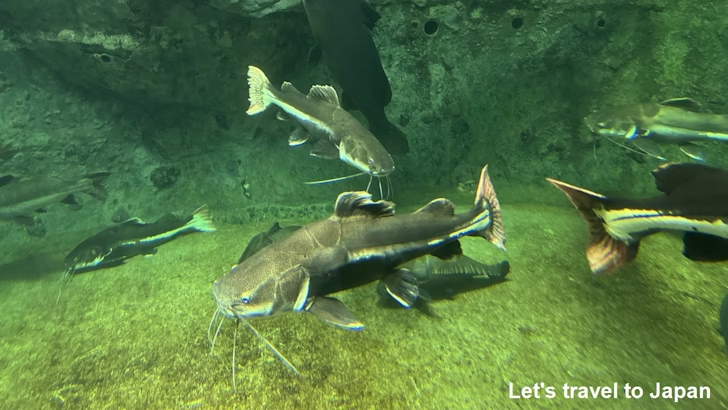
This is an electric eel. Its habitat is in the Amazon and Orinoco rivers in South America. It has electric organs in its body and can generate over 600 volts of electricity.
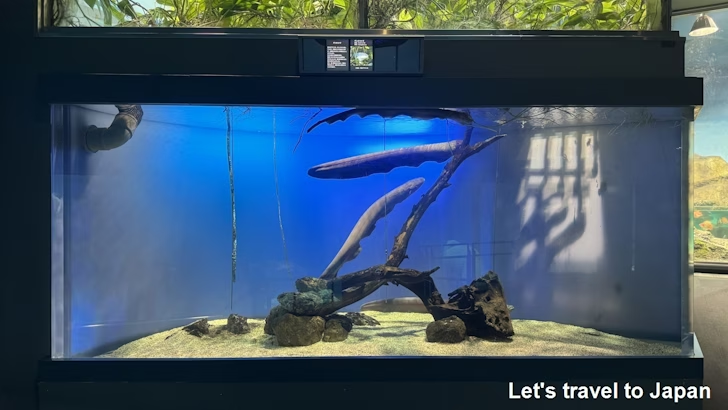
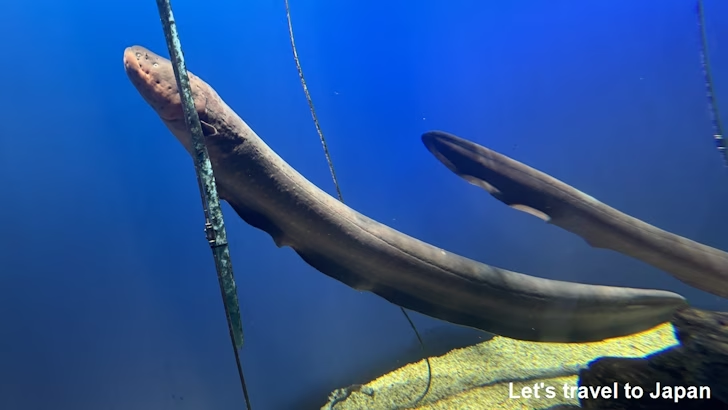
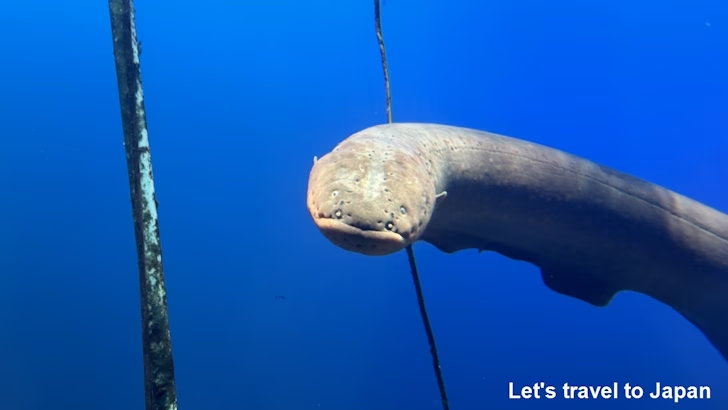
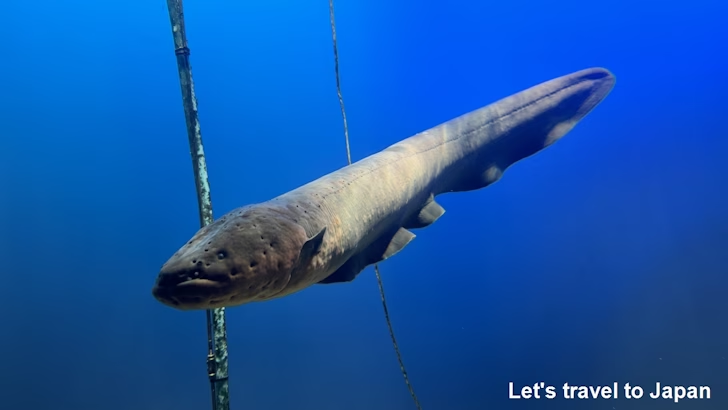
This is a red piranha. Its habitat includes the Amazon and Orinoco rivers, among others, in South America. It's carnivorous, and inside its mouth, it has sharp, triangular teeth.
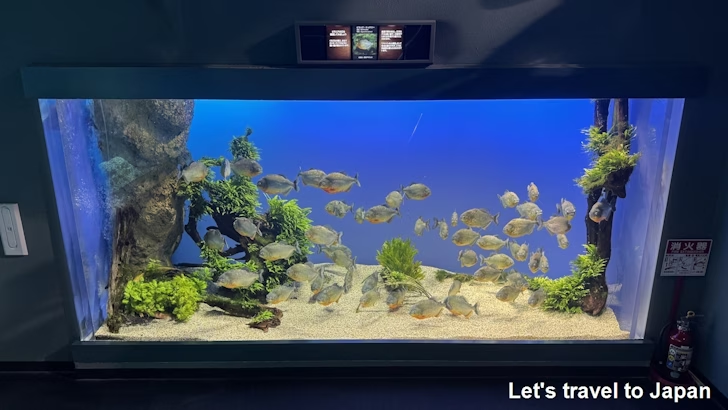
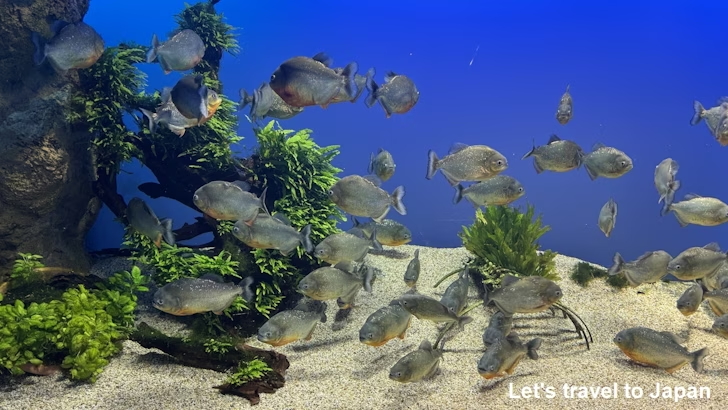
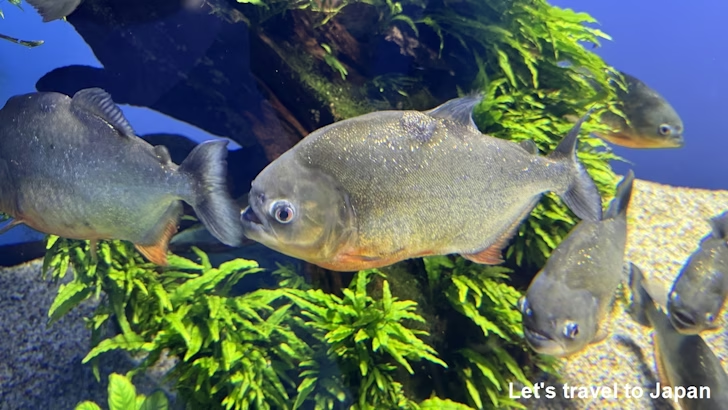
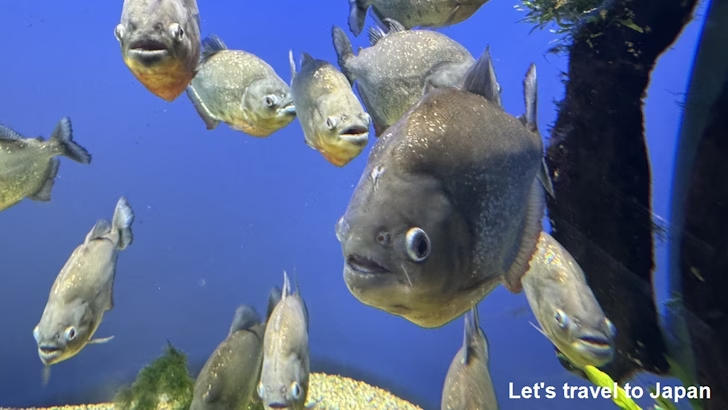
You can also see silver arowana, angelfish, cobalt blue acara, Asian arowana, Tinfoil barb, clown loach, and more.
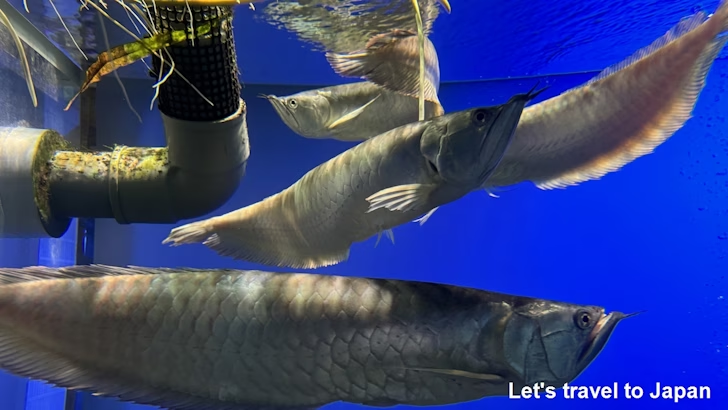
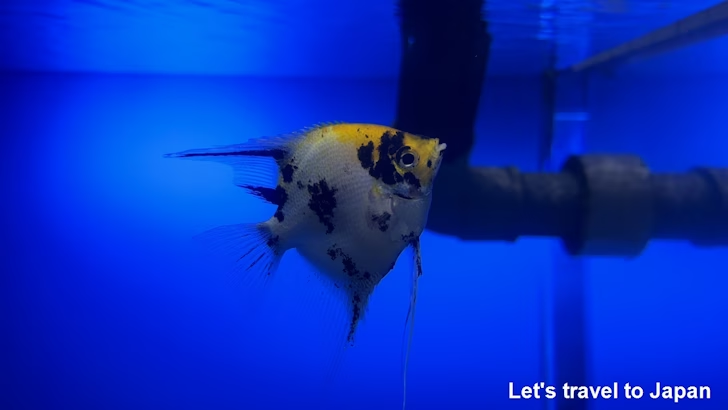
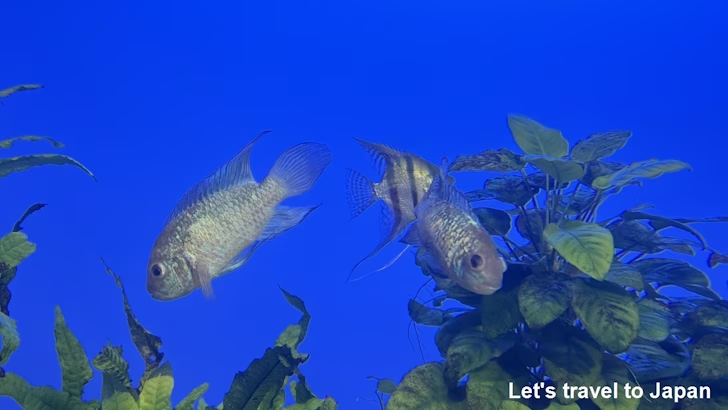
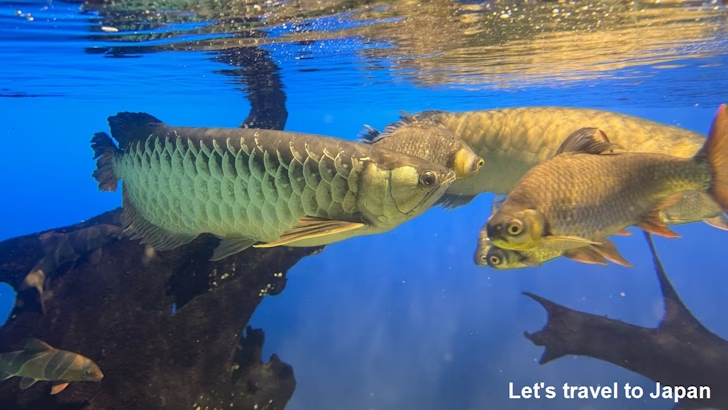
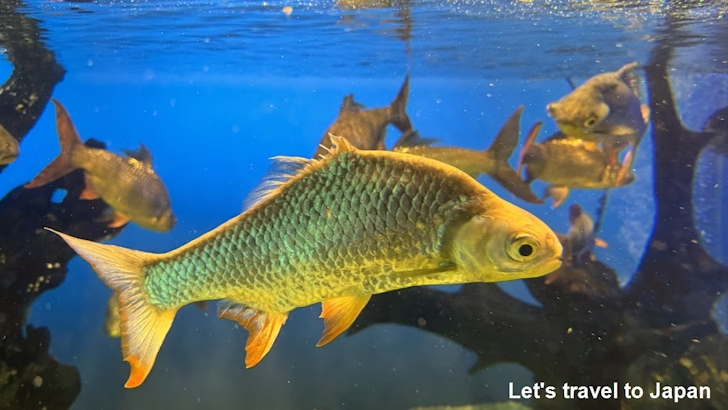
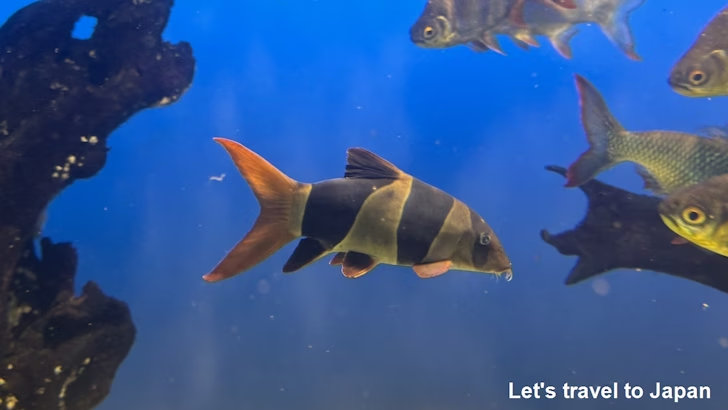
G:Miracle Forest
In "G: Miracle Forest," you can see animals that live near water, such as amphibians and reptiles. Miracle Forest is on the third floor.
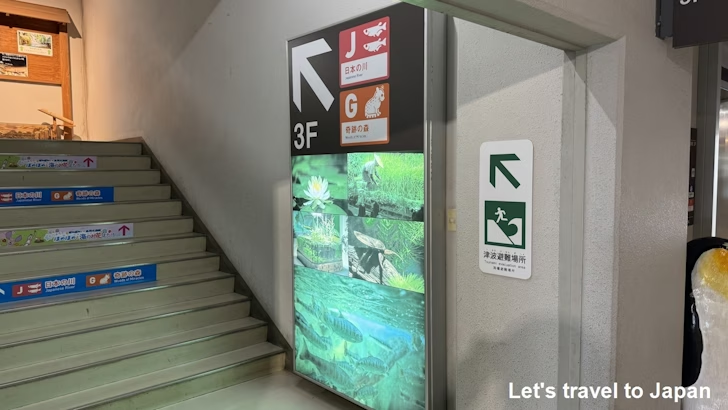
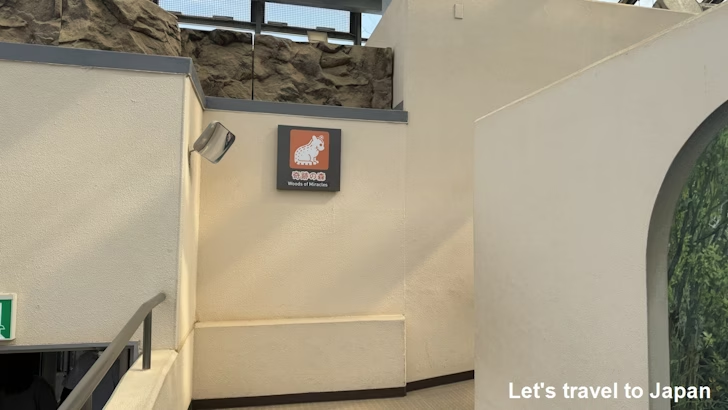
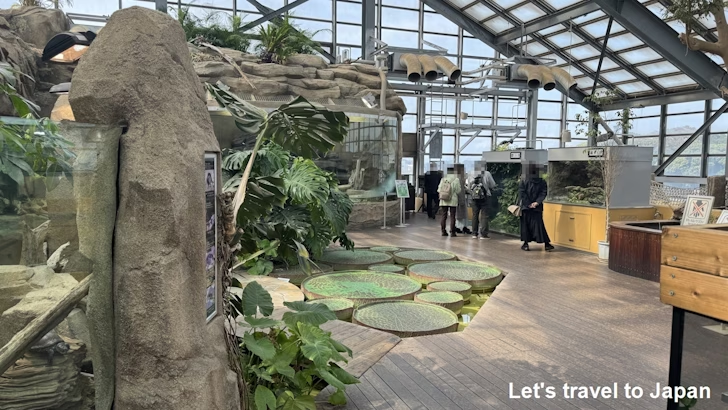
This is a American Alligator. Its habitat is in the southeastern United States. Its total length is about 4 meters, but it can grow up to 6 meters.
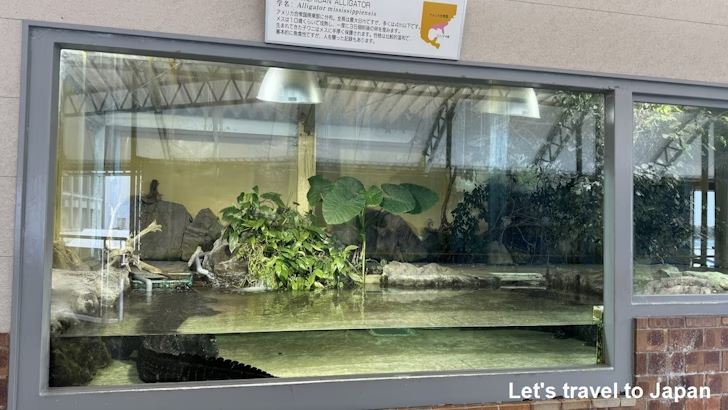
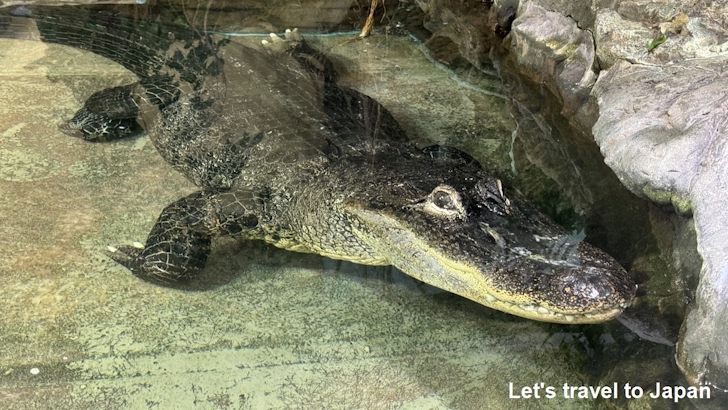
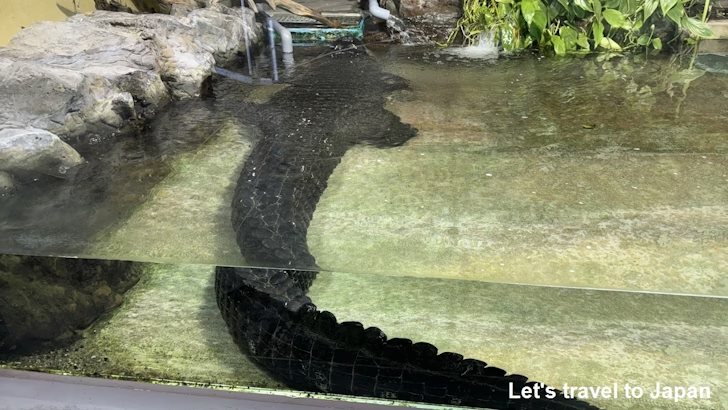
This is a Central Bearded Dragon. Its habitat is from eastern to central Australia. It lives in various places, including deserts and jungles. It mainly eats insects.
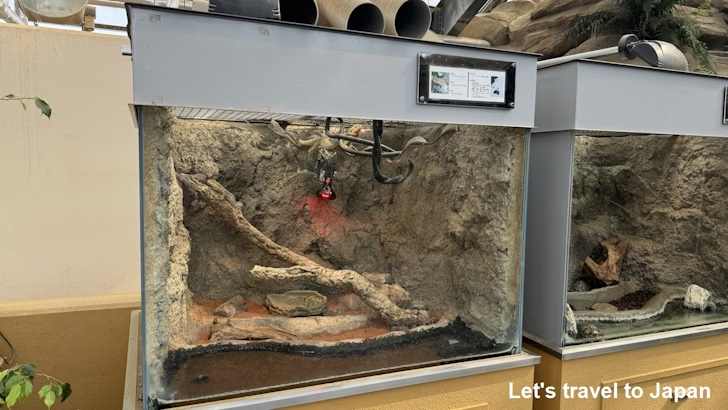
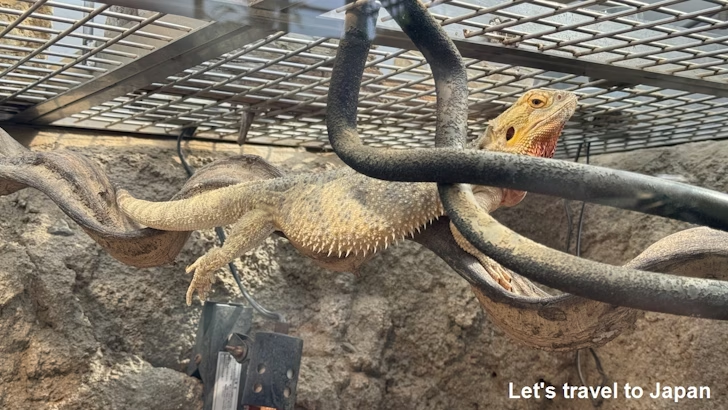
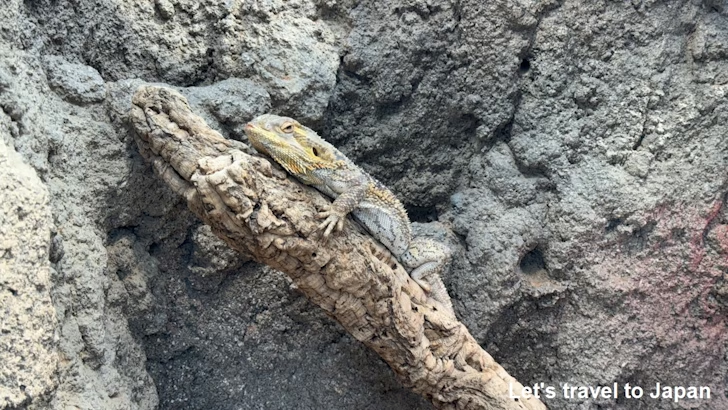
This is an Indian Star Tortoise. Its habitat includes India, Pakistan, and Sri Lanka. The radial pattern on its shell resembles a star, which is the origin of its Japanese name.
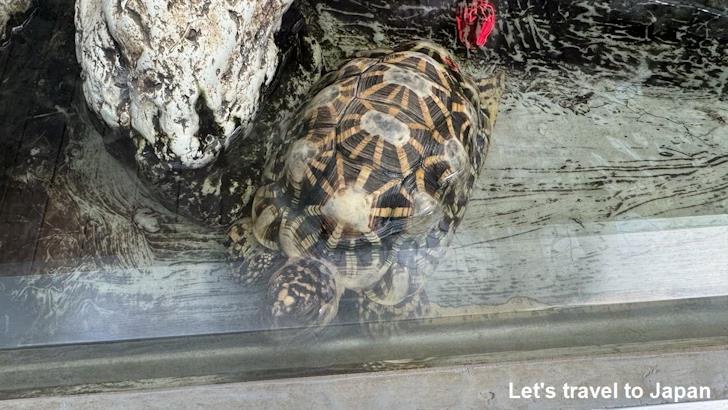
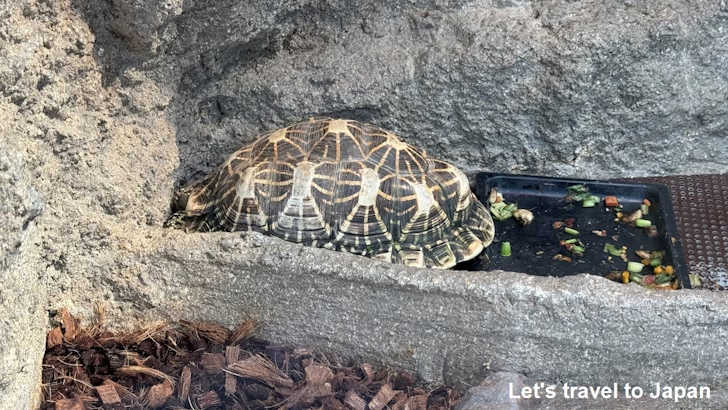
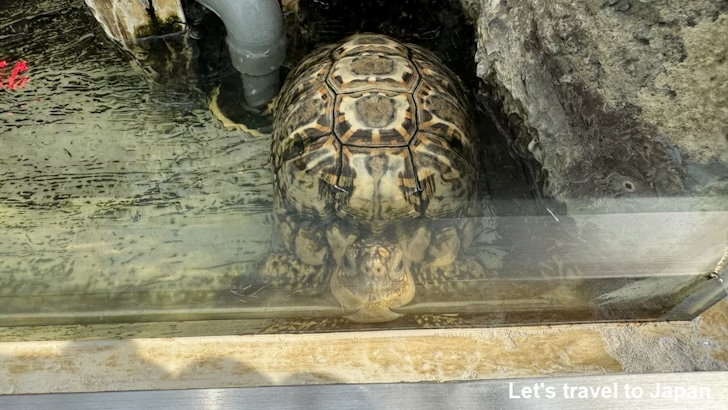
This is a Miyako Grass Lizard. It's endemic to Japan and its habitat is in the Miyako Islands of Okinawa Prefecture. It has a slender body and bright green coloration.
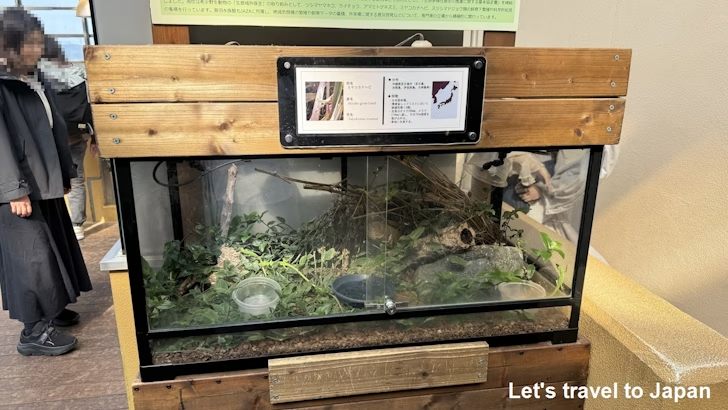
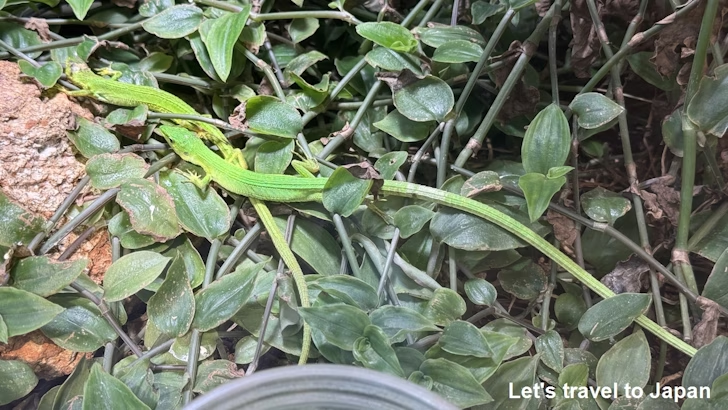
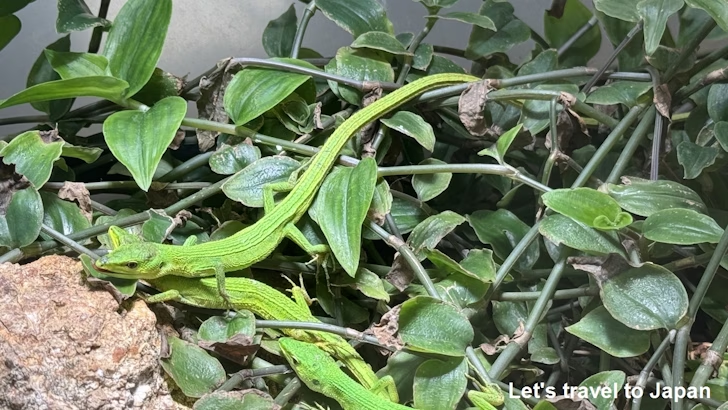
These are Aldabra Giant Tortoise, African Spurred Tortoise, and Red-footed Tortoise. The Aldabra giant tortoise is native to the Seychelles islands, the African spurred tortoise is native to central Africa, and the red-footed tortoise is native to Central and South America.
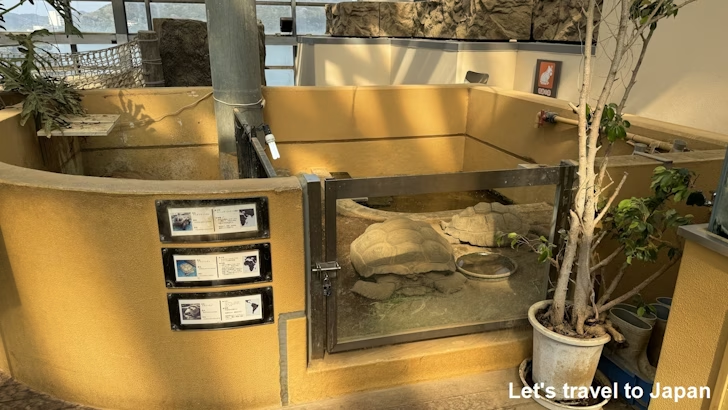
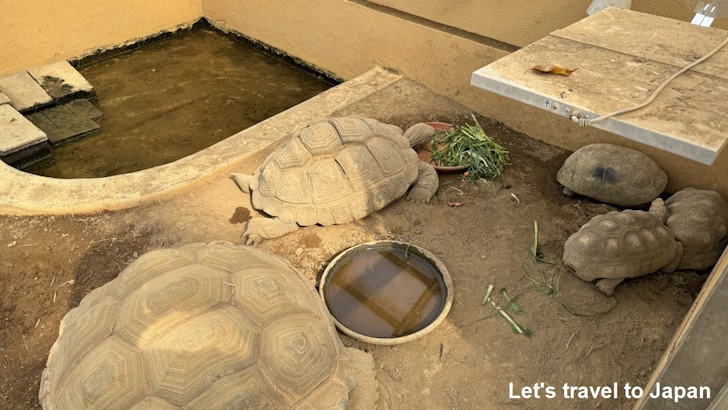
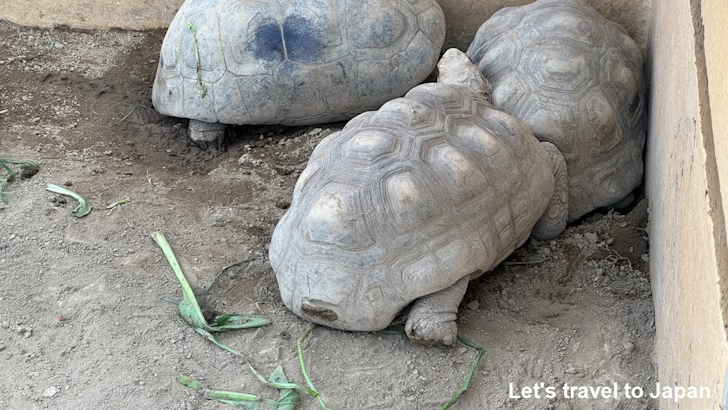
This is a Fishing Cat. Its habitat includes India, Sri Lanka, the Indochina Peninsula, Indonesia, and China. It is a piscivore that can catch and eat fish.
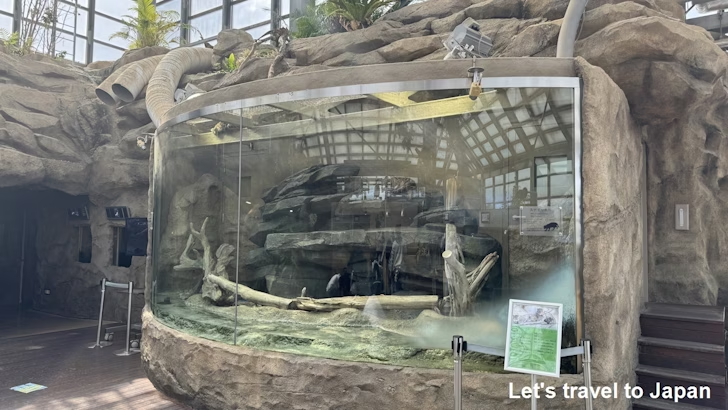
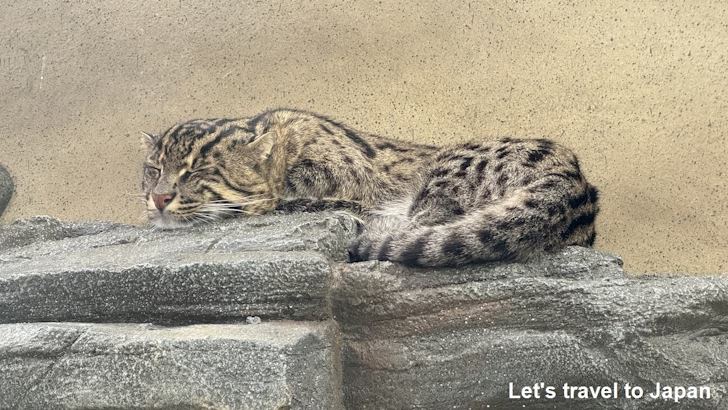
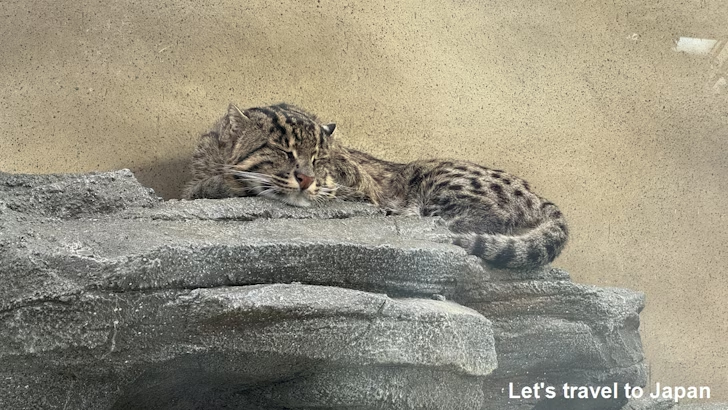
This is a Green Iguana. Its habitat is in Central and South America. It often stays on trees near water and primarily eats plants.
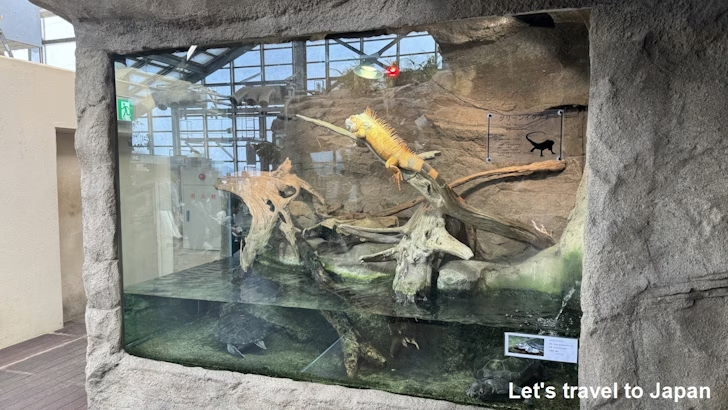
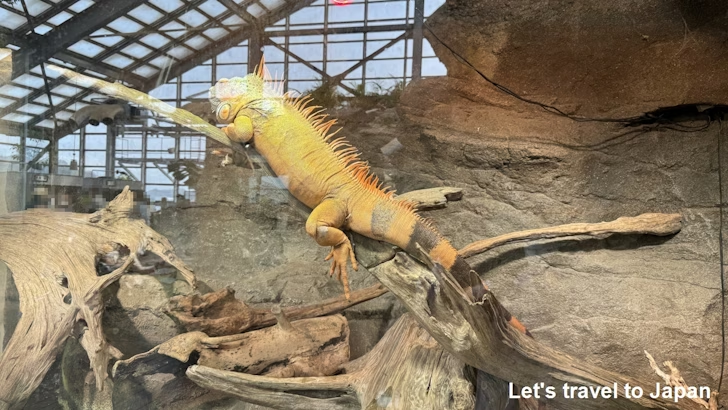
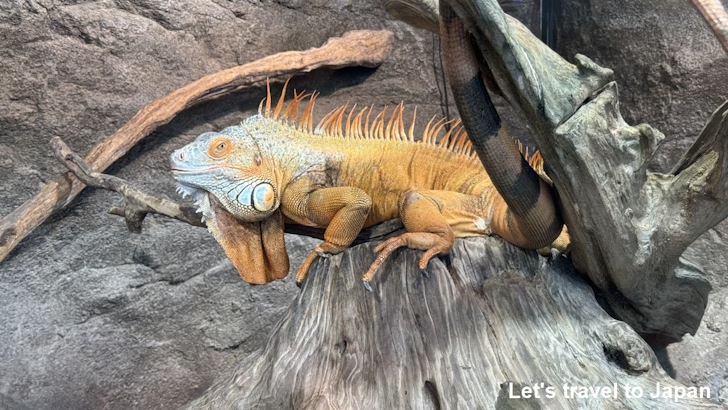
This is a Doctor Fish. Its habitat is in Iran and Iraq. It's known as the doctor fish because it eats human dead skin.
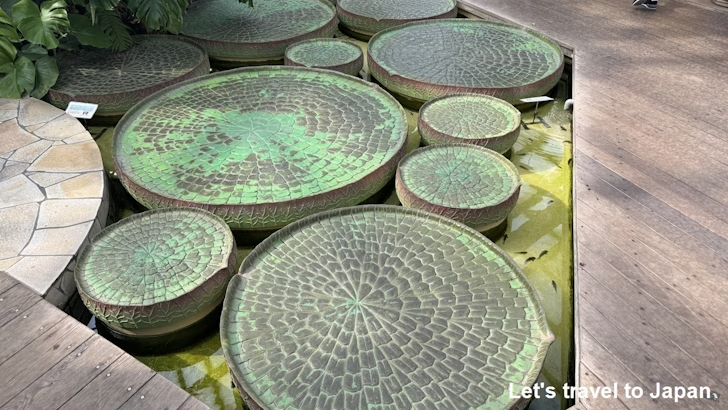
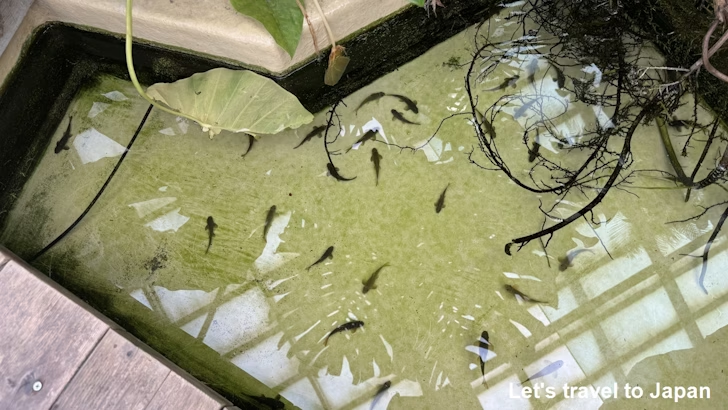
Various frogs and lizards are also on display.
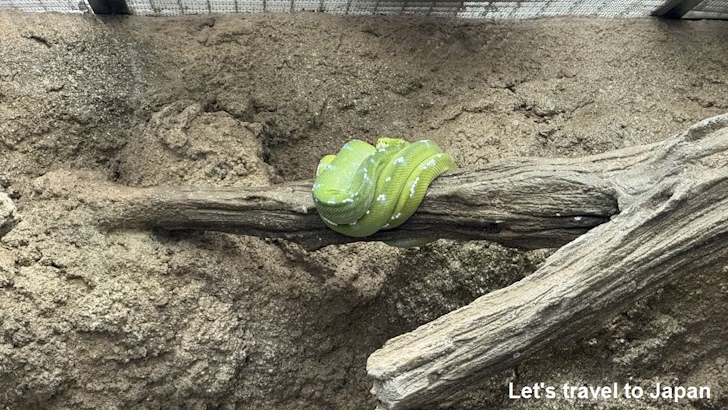
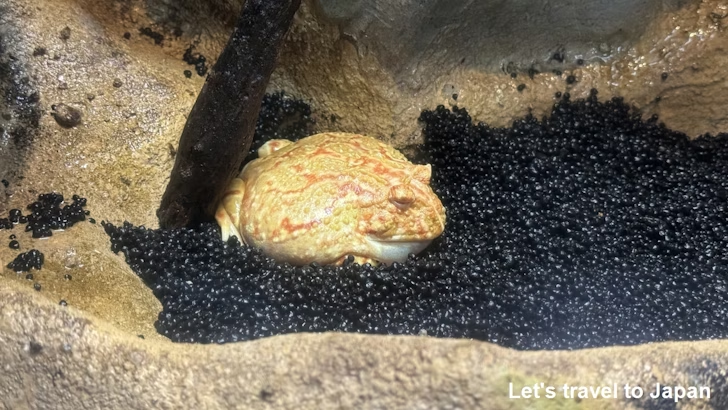
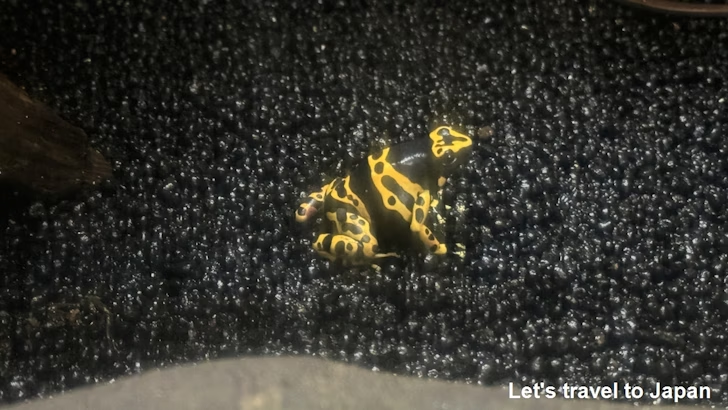
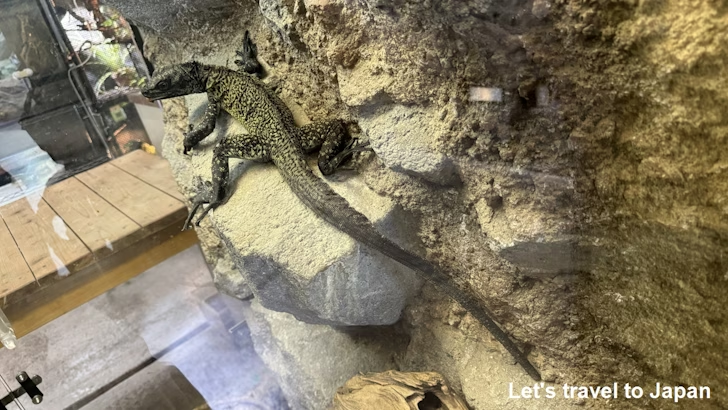
H:Mermaid's Sea
In "H:Mermaid's Sea," you can see a dugong. It's said that the dugong was the inspiration for mermaids.
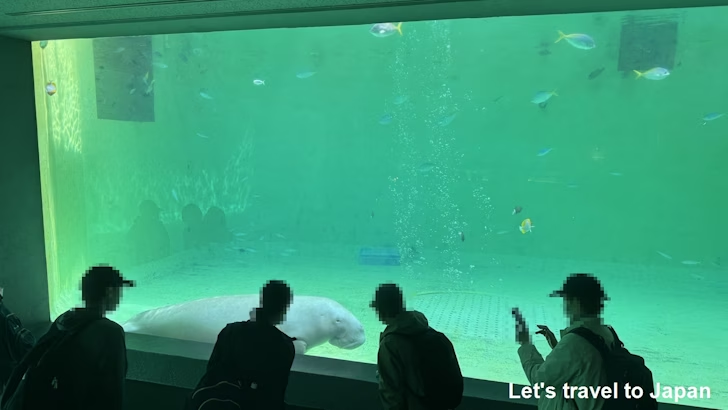
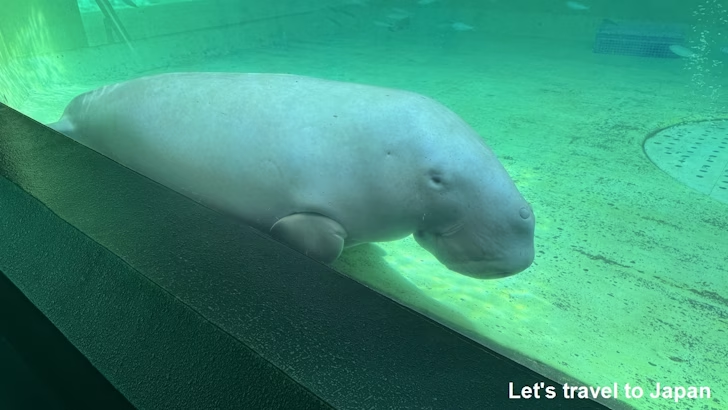
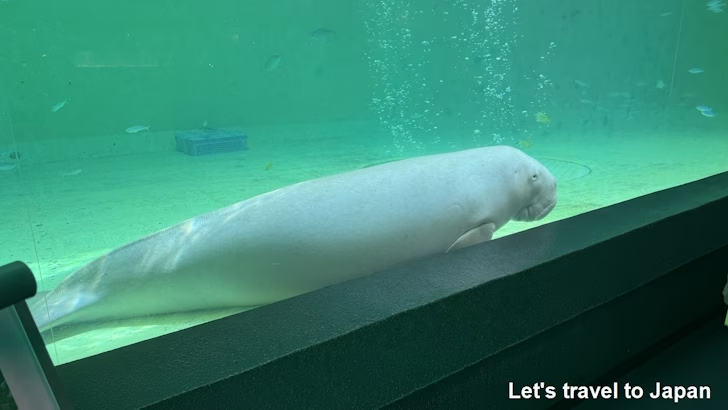
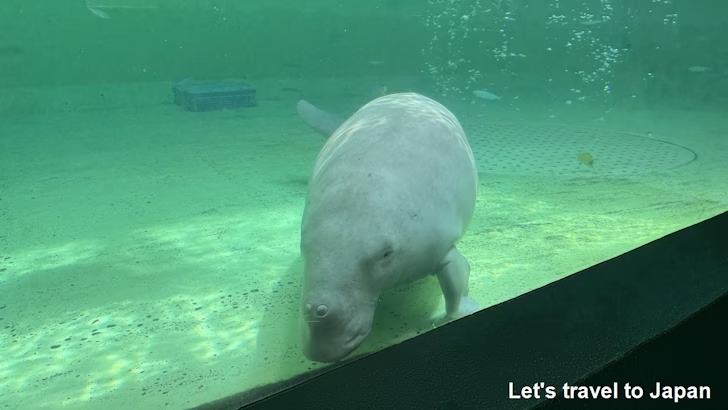
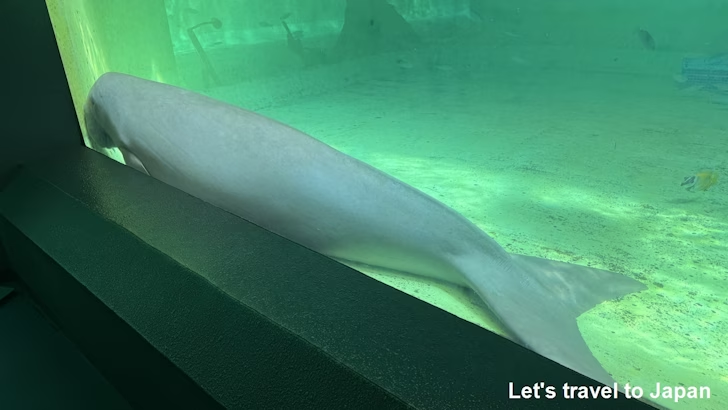
There are also other tanks where you can see colorful fish.
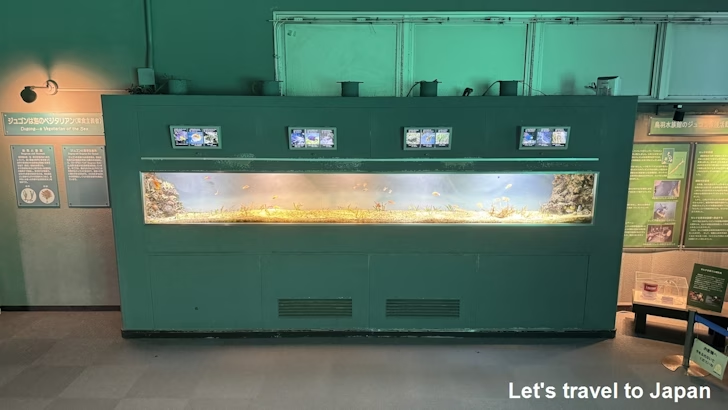
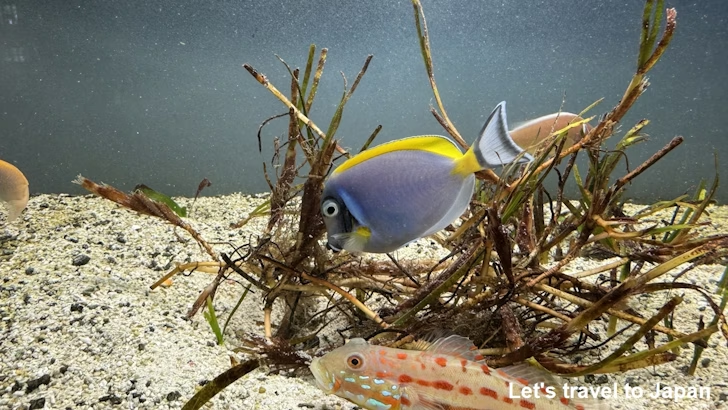
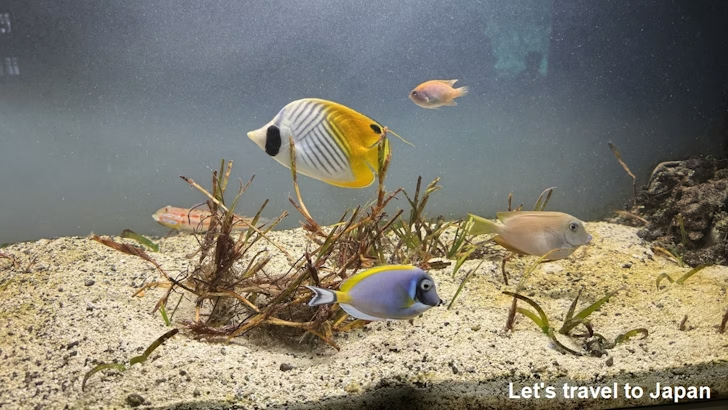
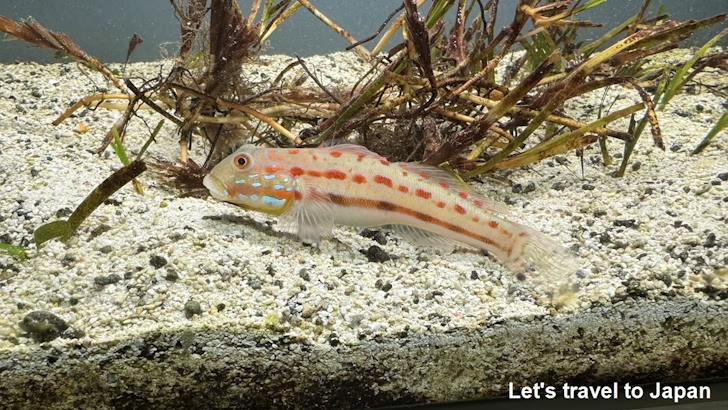
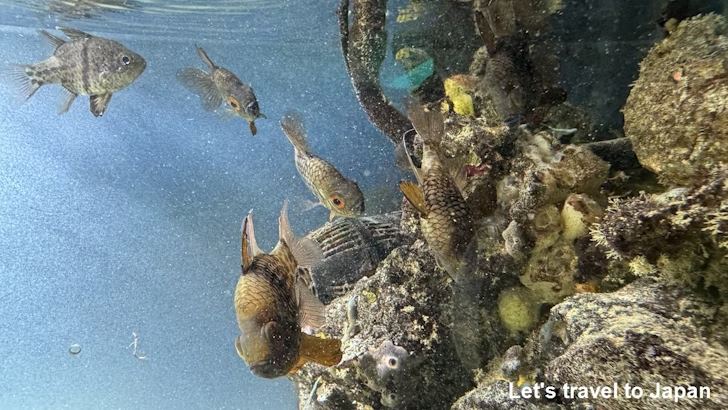
List of photos related to Toba Aquarium
Please see below for a list of photos related to Toba Aquarium.
Address and access method of Toba Aquarium
Address of Toba Aquarium
The address of Toba Aquarium is "3-3-6 Toba, Toba City, Mie Prefecture".
Access method of Toba Aquarium
I will explain how to get to Toba Aquarium from Nagoya Station.
Kintetsu Nagoya Line Express
117 minutes
Walking
10 minutes
Nagashima Spa Land parking lot
Toba Aquarium has two official parking lots.
Attractions near Toba Aquarium
Several notable attractions are located near Toba Aquarium:
LEGOLAND Japan
LEGOLAND Japan is a LEGO brick-themed amusement park located in Nagoya, Aichi Prefecture. The rides and attractions within the park are designed to resemble structures made out of LEGO bricks. Additionally, numerous objects created from LEGO bricks are installed throughout the park. Adjacent to the park are SEA LIFE Nagoya, an aquarium facility, and the LEGOLAND Japan Hotel, which offers accommodation.
SCMAGLEV and Railway Park
The SCMAGLEV and Railway Park, operated by JR Central, is a railway museum located in Nagoya City, Aichi Prefecture. Inside the museum, a wide range of vehicles are on display, from steam locomotives to actual conventional and Shinkansen vehicles, and even the superconducting maglev. Additionally, visitors can experience train driving simulators and view railway dioramas.
Nagoya Castle
Nagoya Castle is a striking historical landmark in Nagoya, Japan, known for its iconic architecture and stunning golden shachi ornaments adorning the rooftop. Visitors can explore the castle's extensive grounds, lush gardens, and informative museum, which provides a captivating glimpse into Japan's rich feudal history. The beautifully reconstructed castle serves as a testament to Japan's architectural prowess and offers a memorable experience for history and culture enthusiasts.
Atsuta Shrine
Atsuta Shrine is a Shinto shrine located in Nagoya City, Aichi Prefecture. Atsuta Shrine was founded in the year 113, making it about 1900 years old. It is known for housing the Kusanagi Sword (also called Ame-no-Murakumo-no-Tsurugi), one of the Three Sacred Treasures of Japan. The shrine complex includes a treasure hall that stores about 6,000 artifacts, a large camphor tree said to be over 1,000 years old, and the Nobunaga Fence, which was donated by Oda Nobunaga as a token of gratitude for his victory in the Battle of Okehazama.
Other information about Toba Aquarium
Official site about Nagashima Spa Land :

-- --
Thank you for reading to the end.
( Written by Tatsuo Ikura )